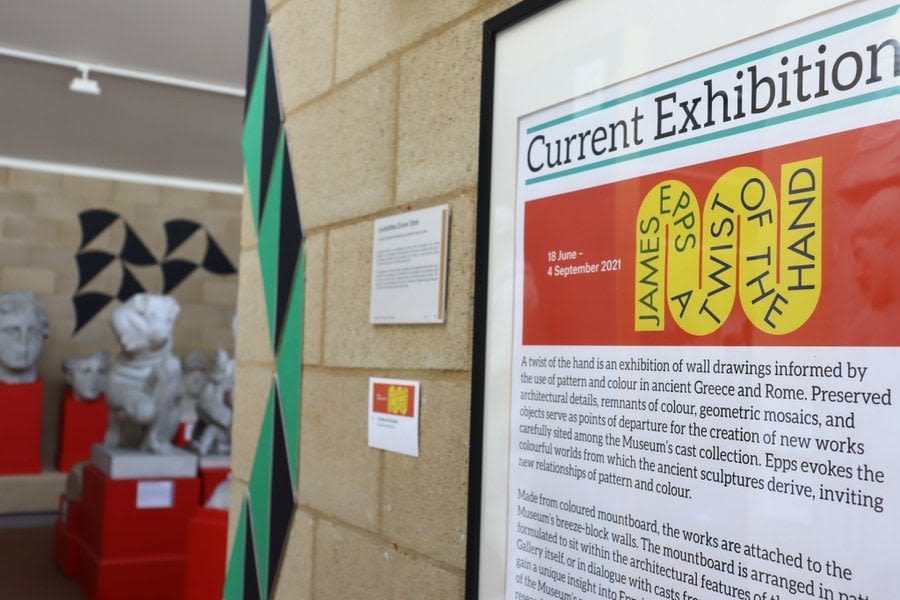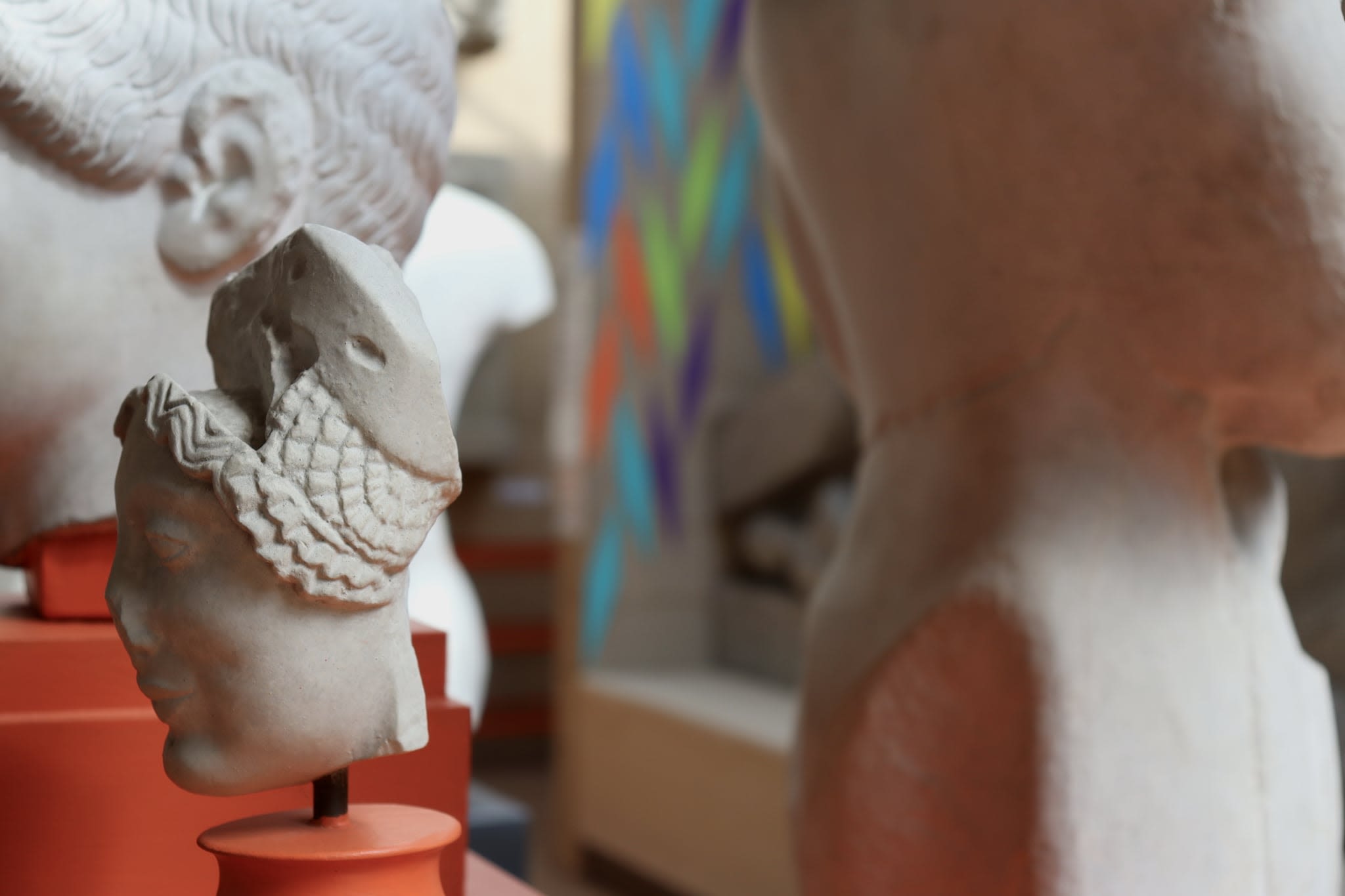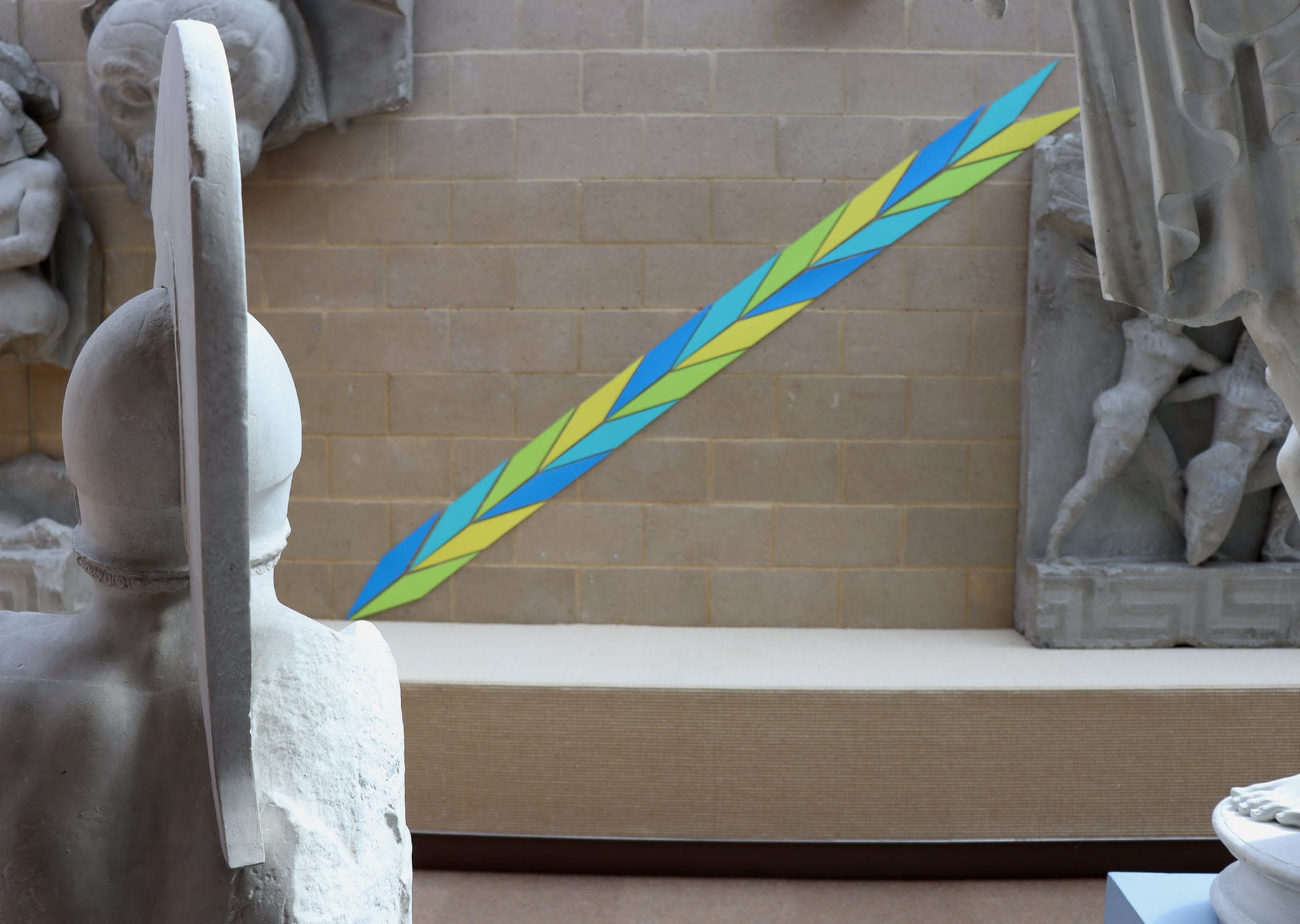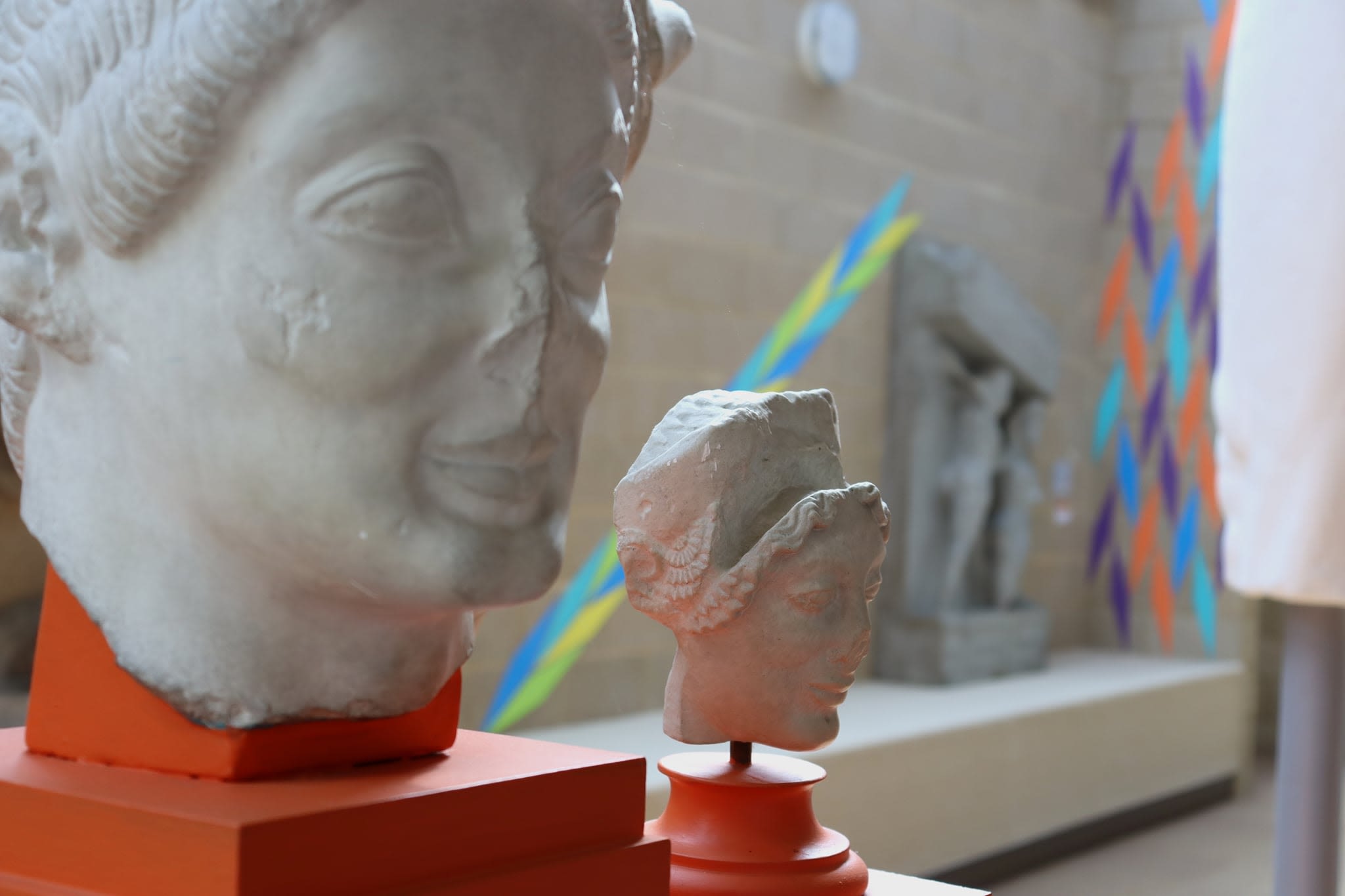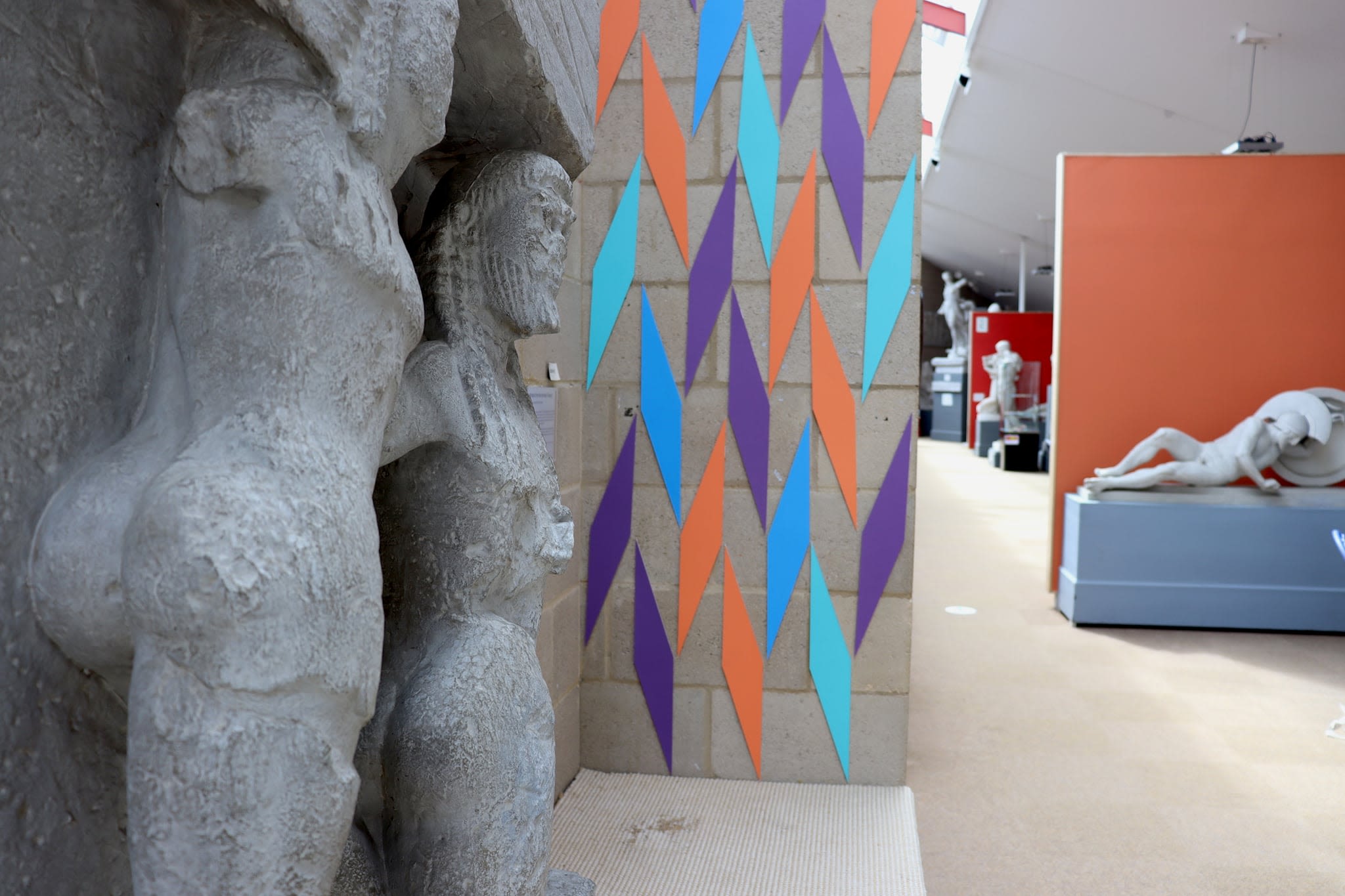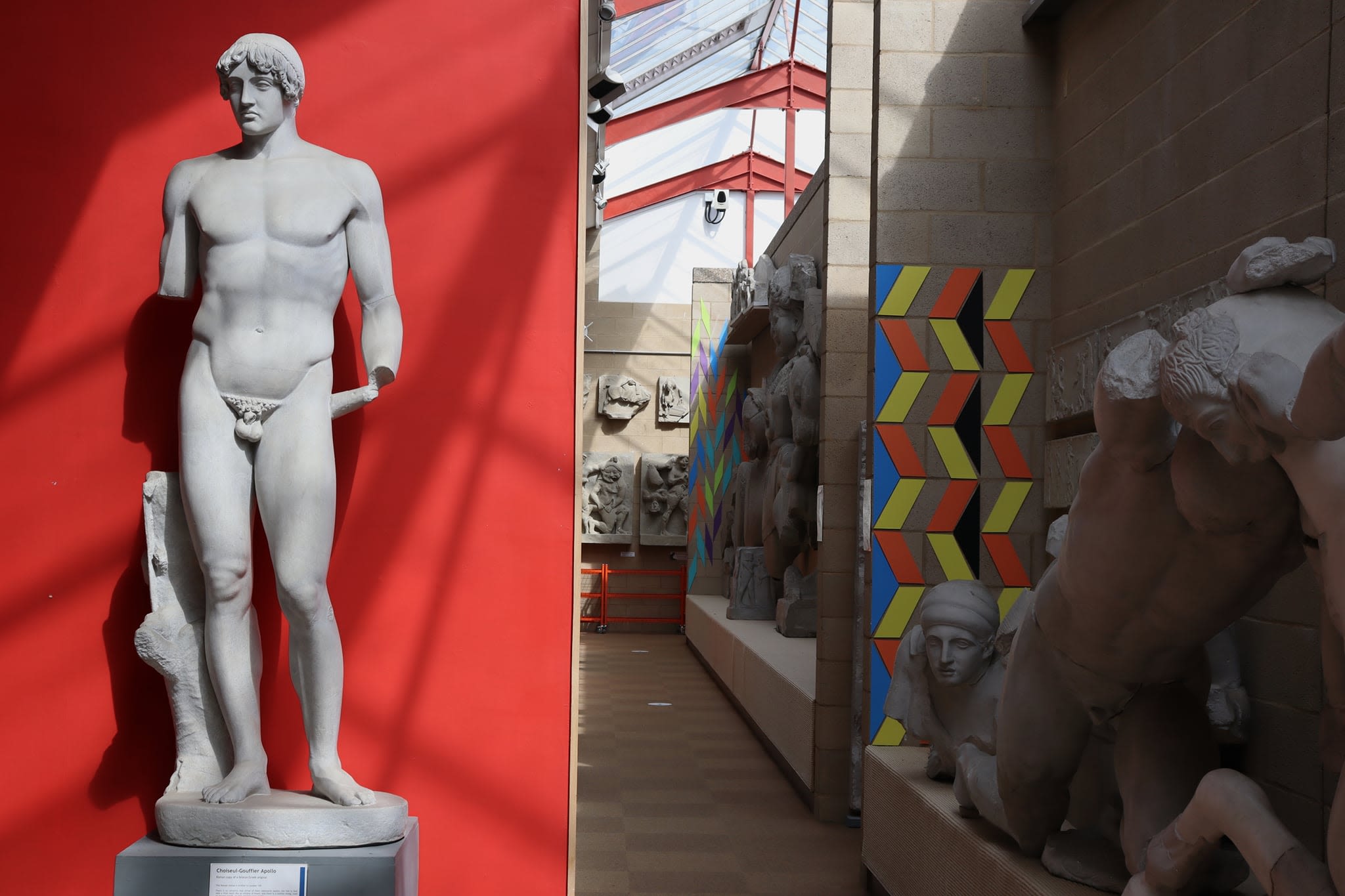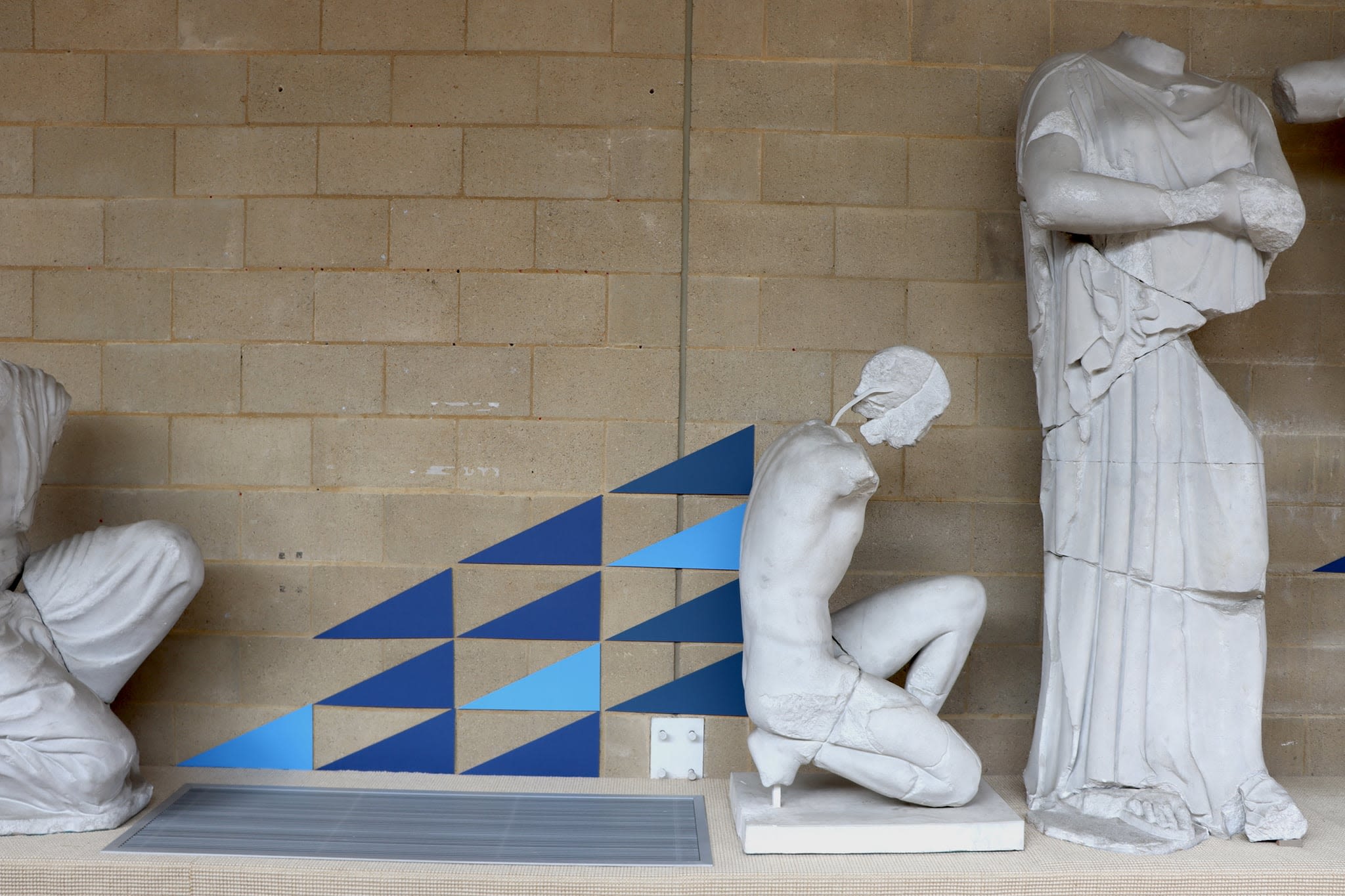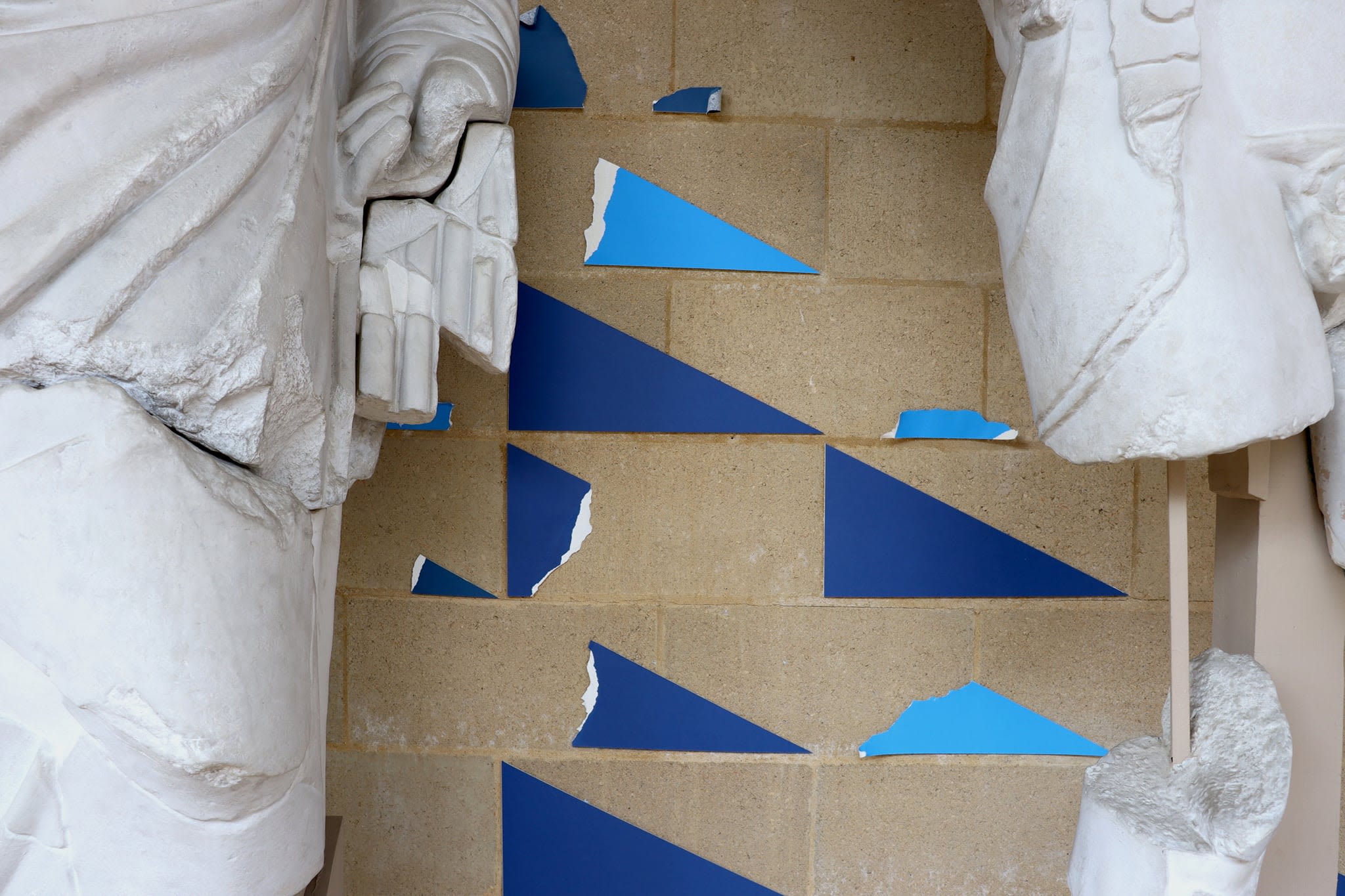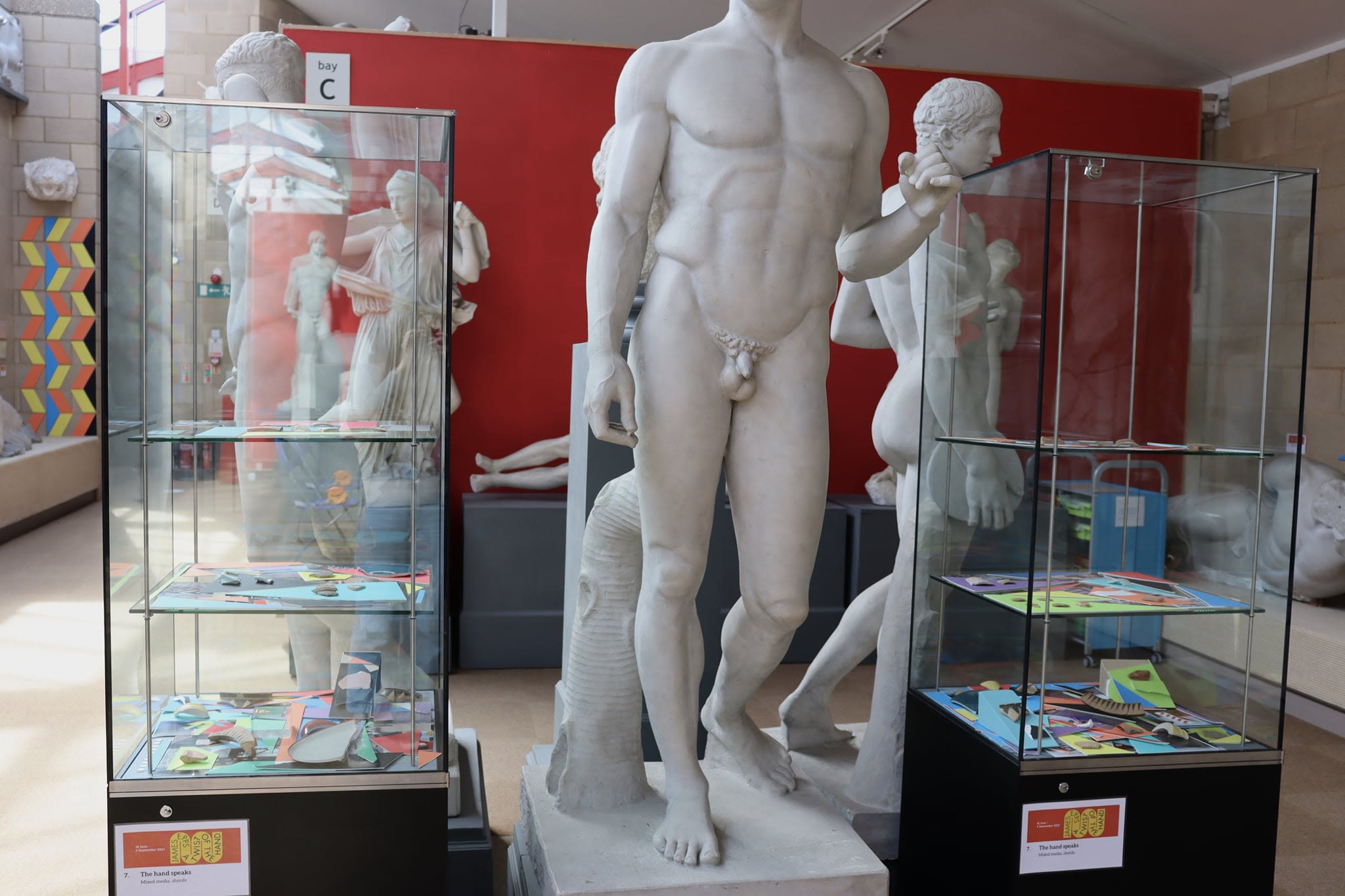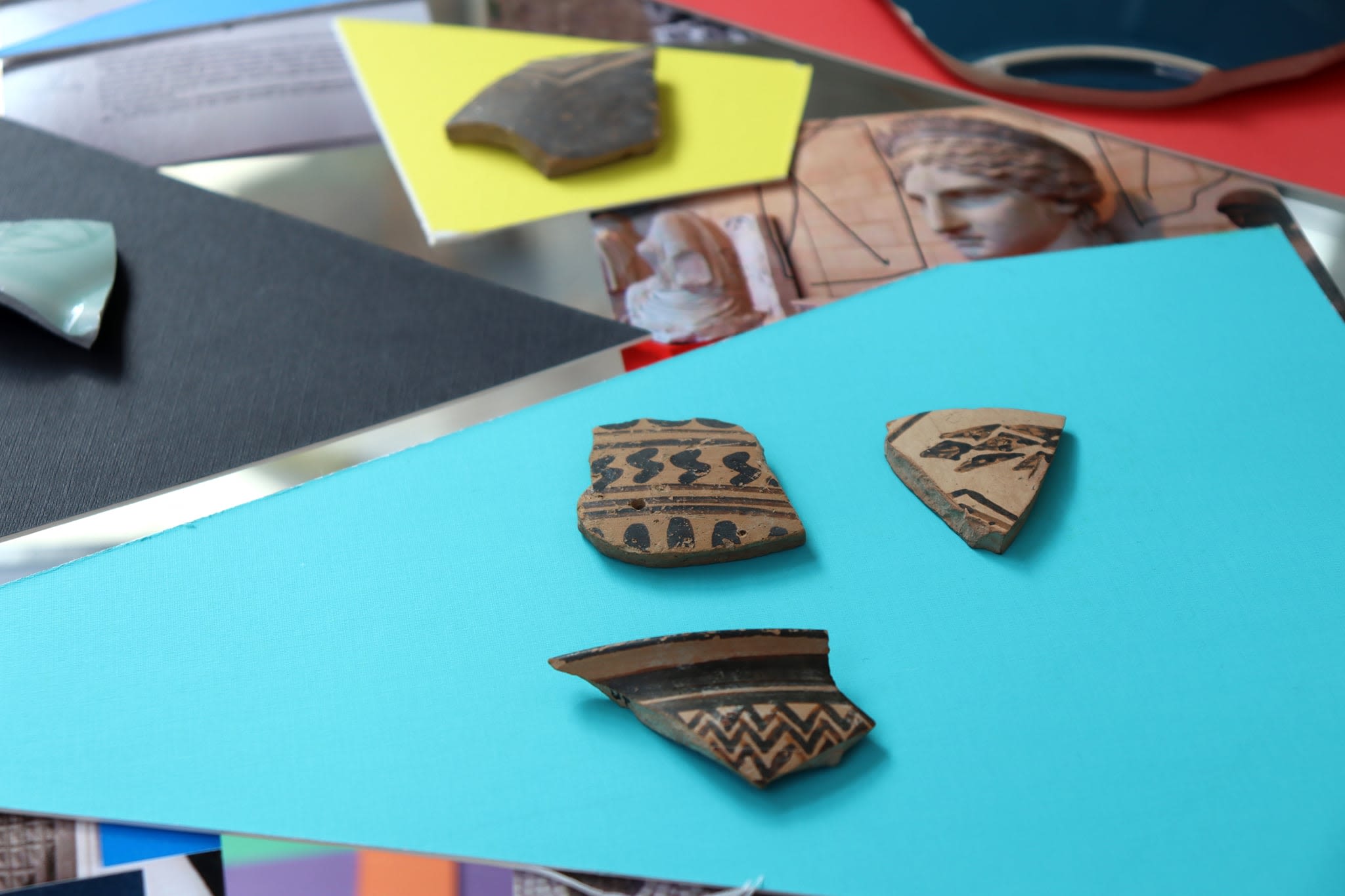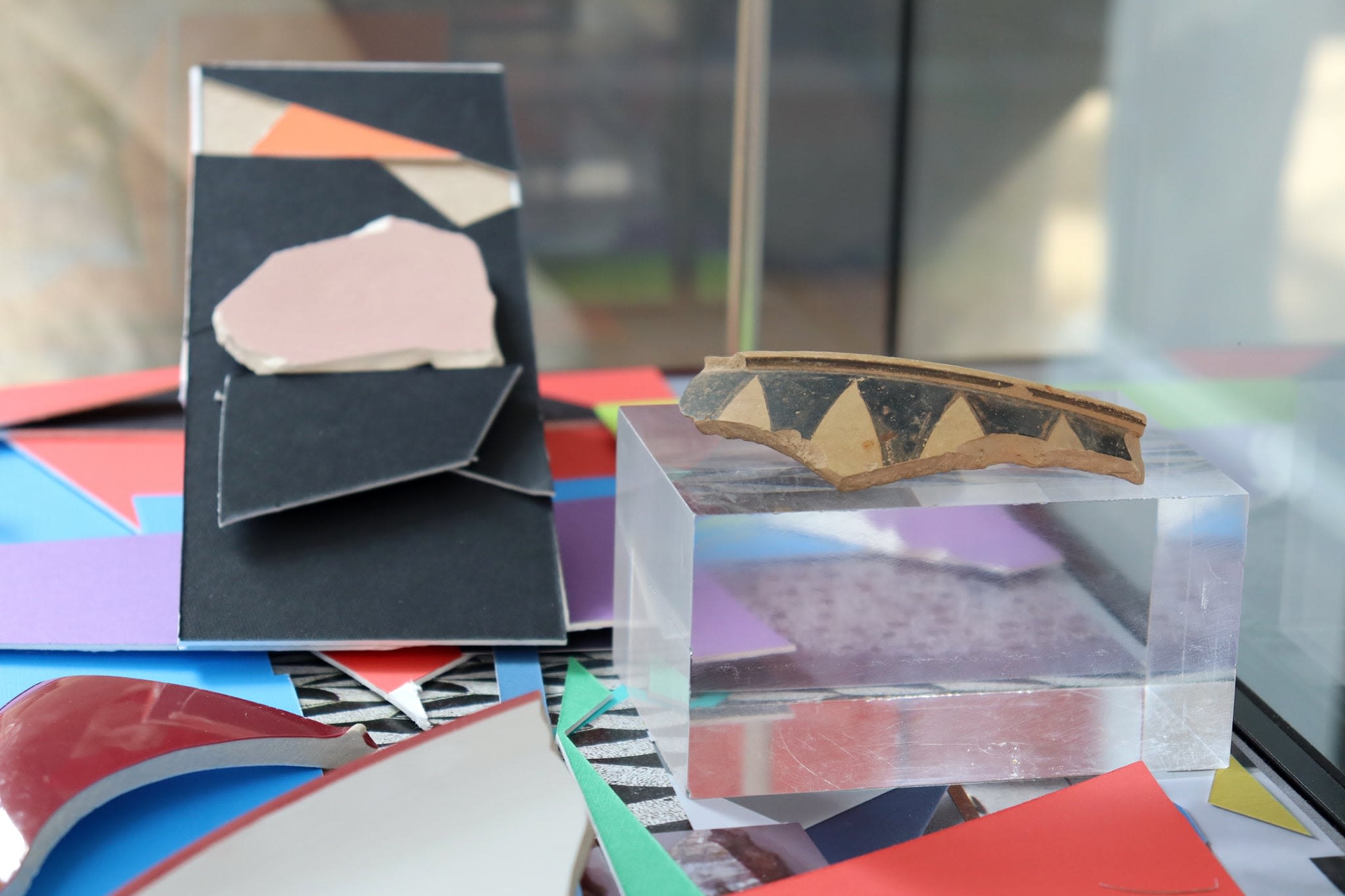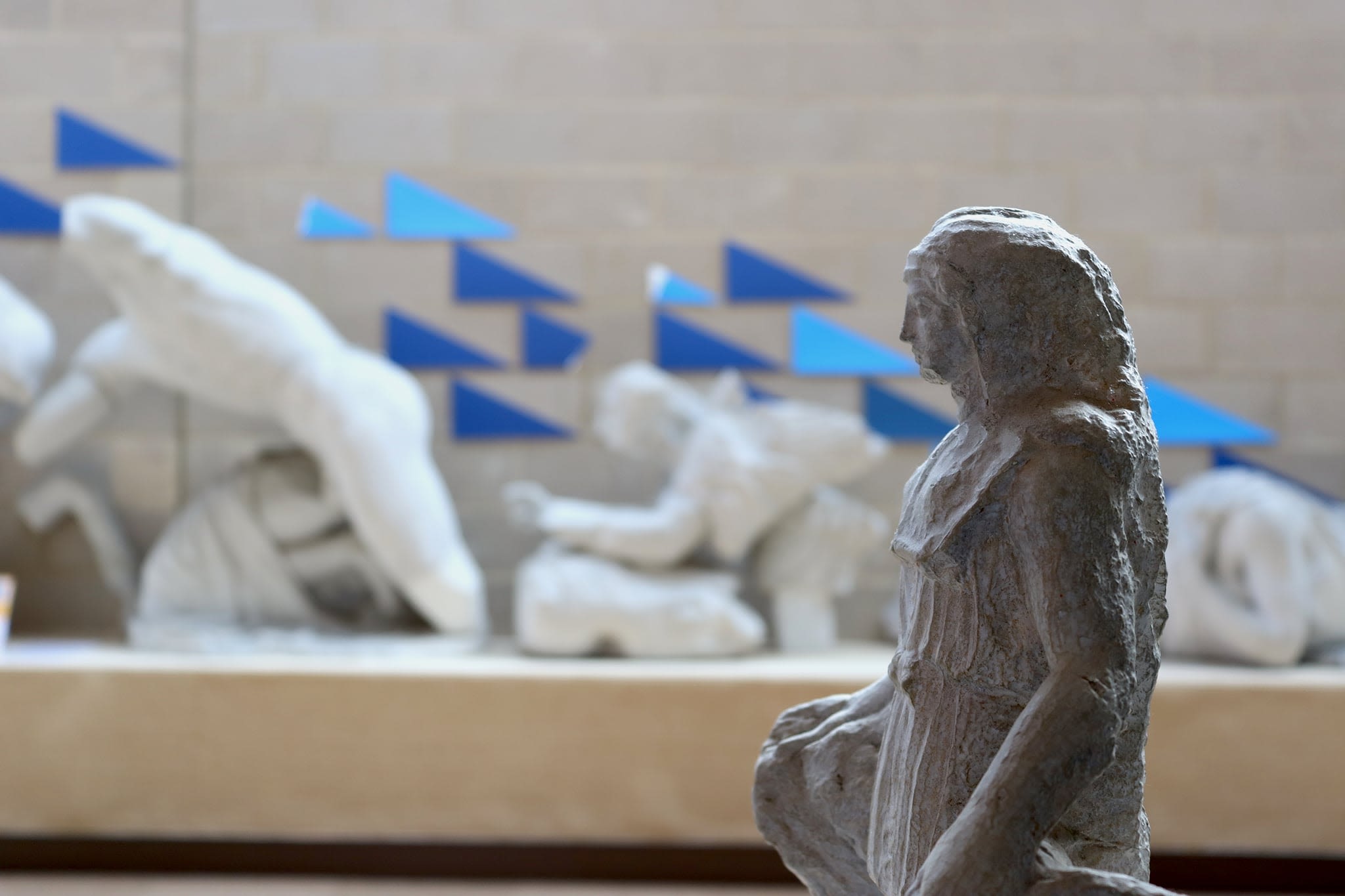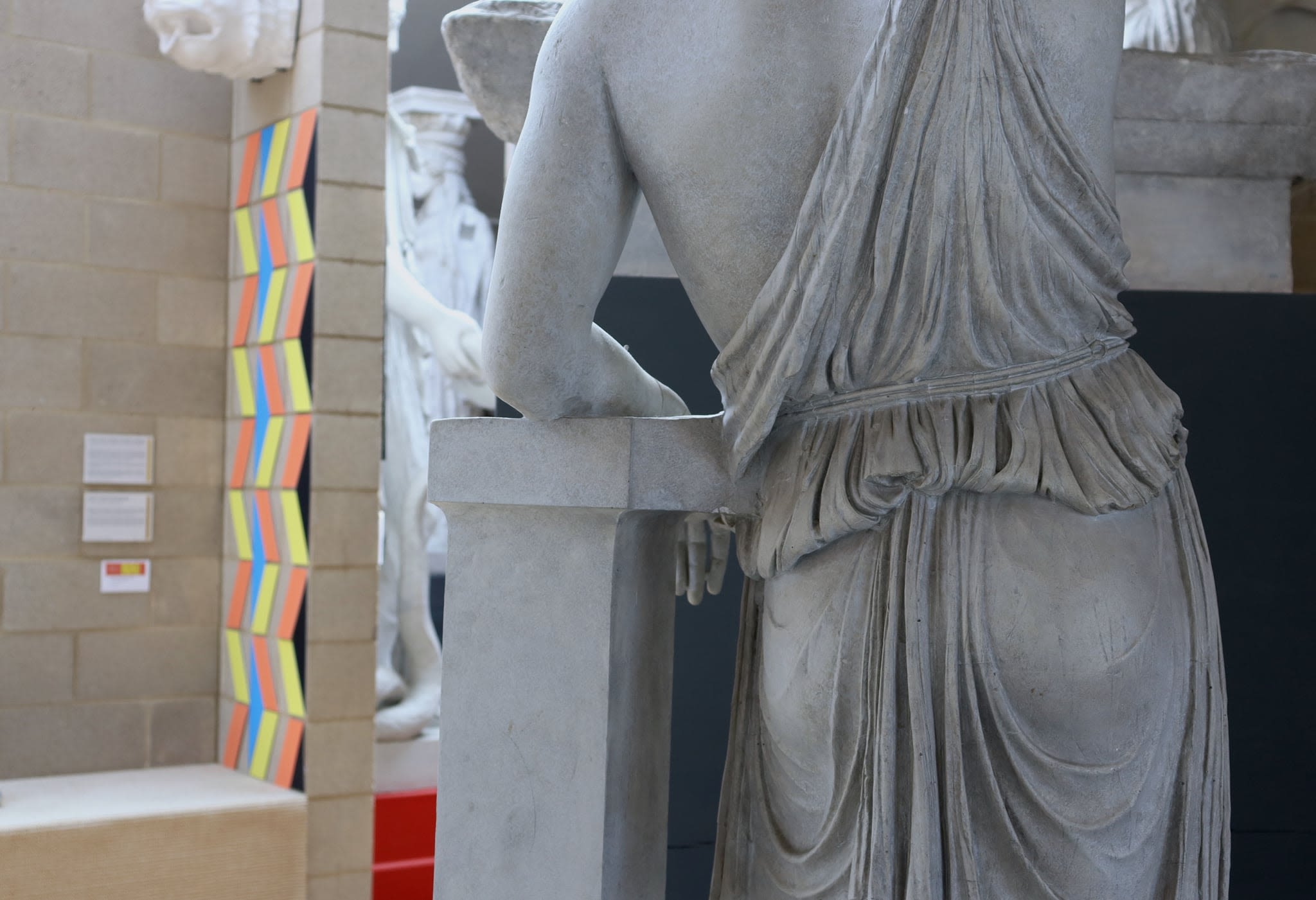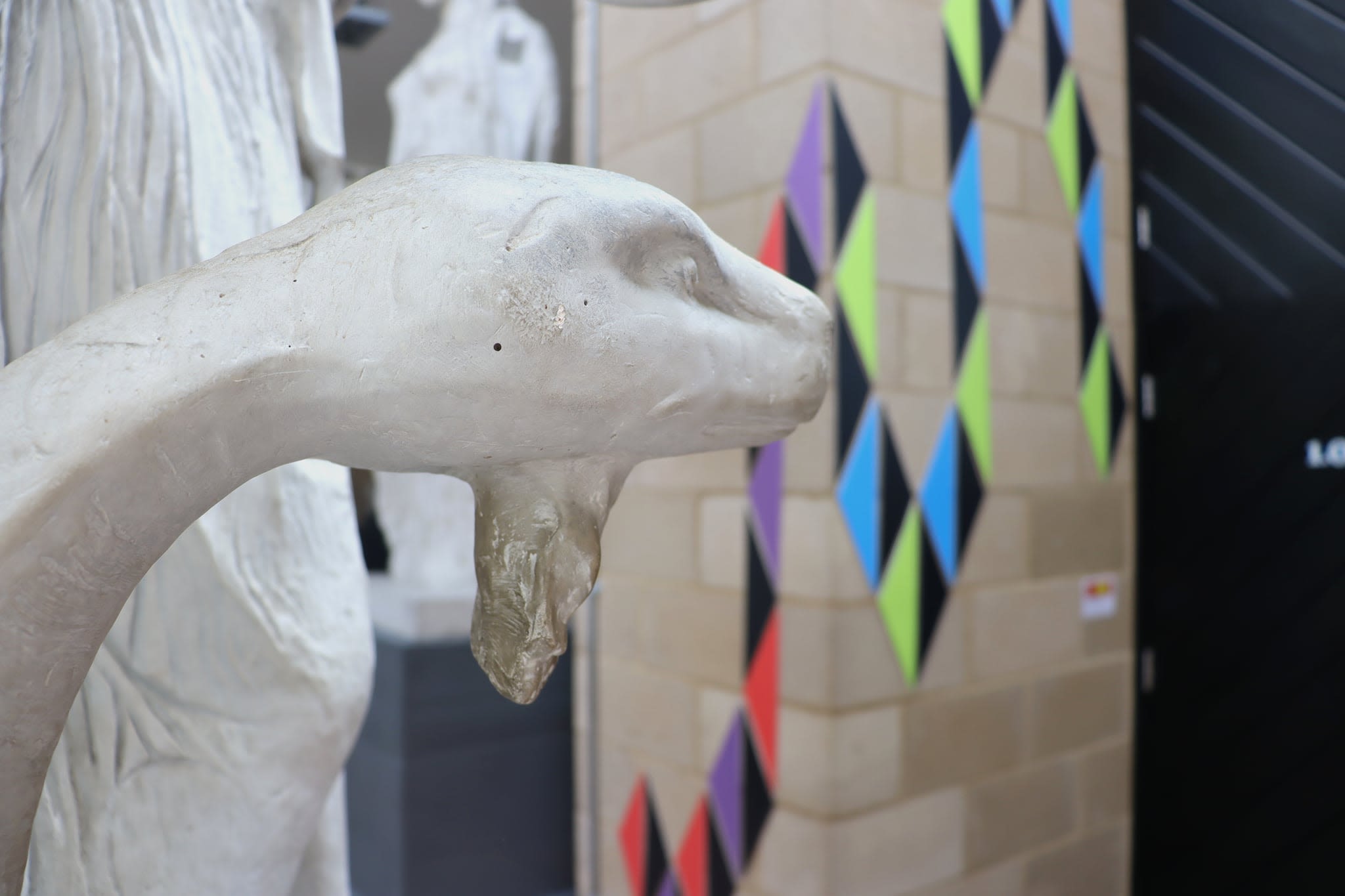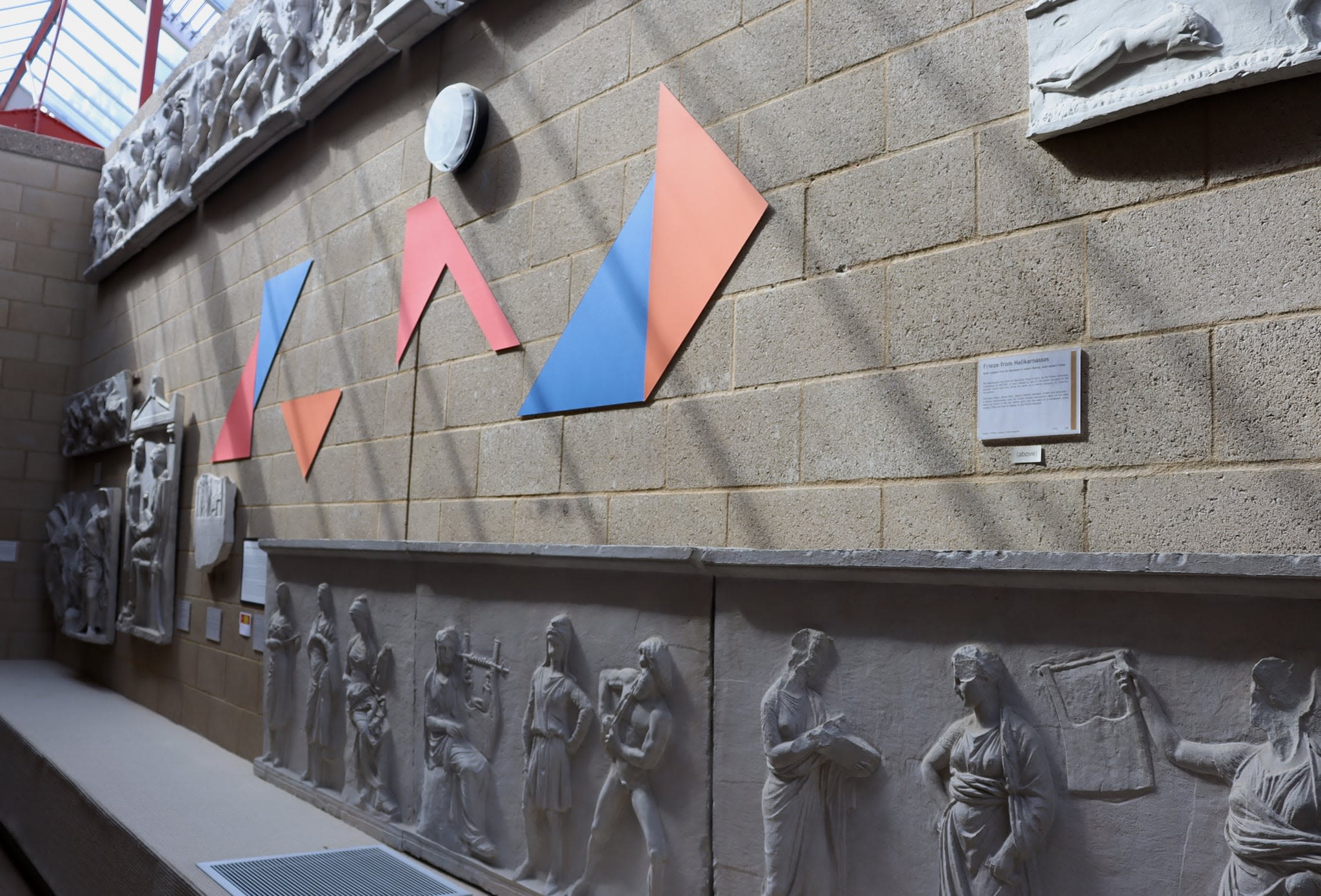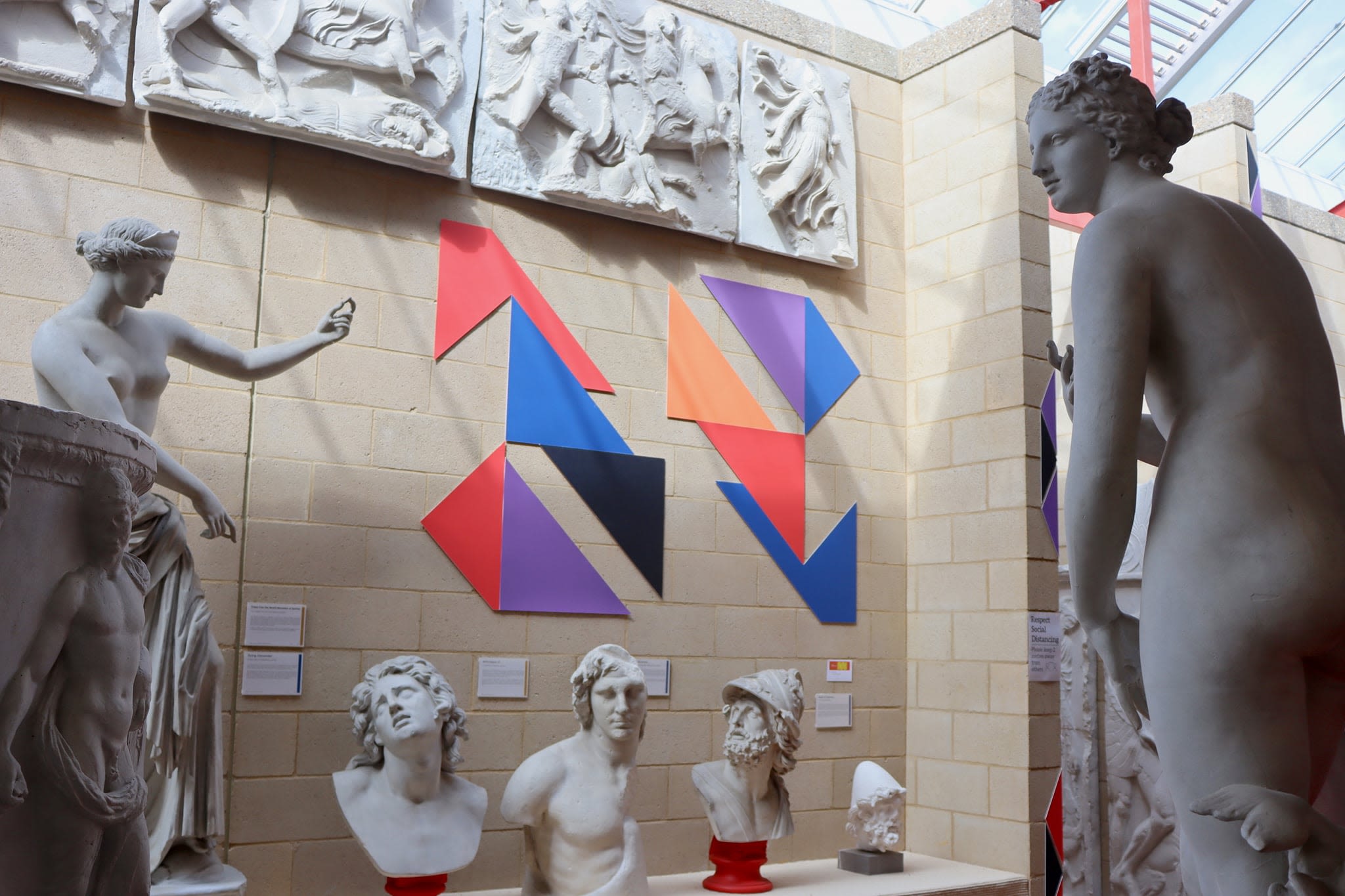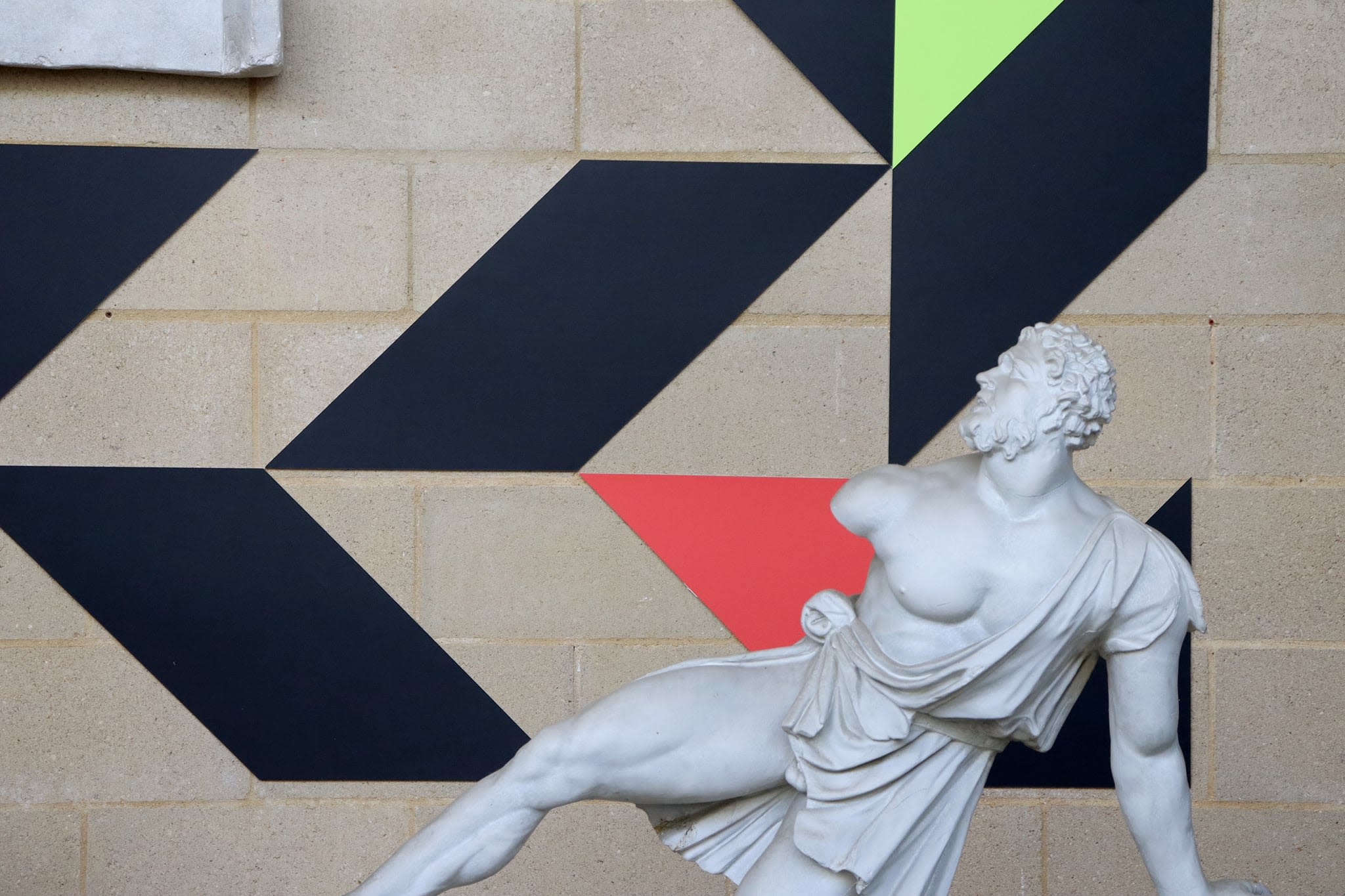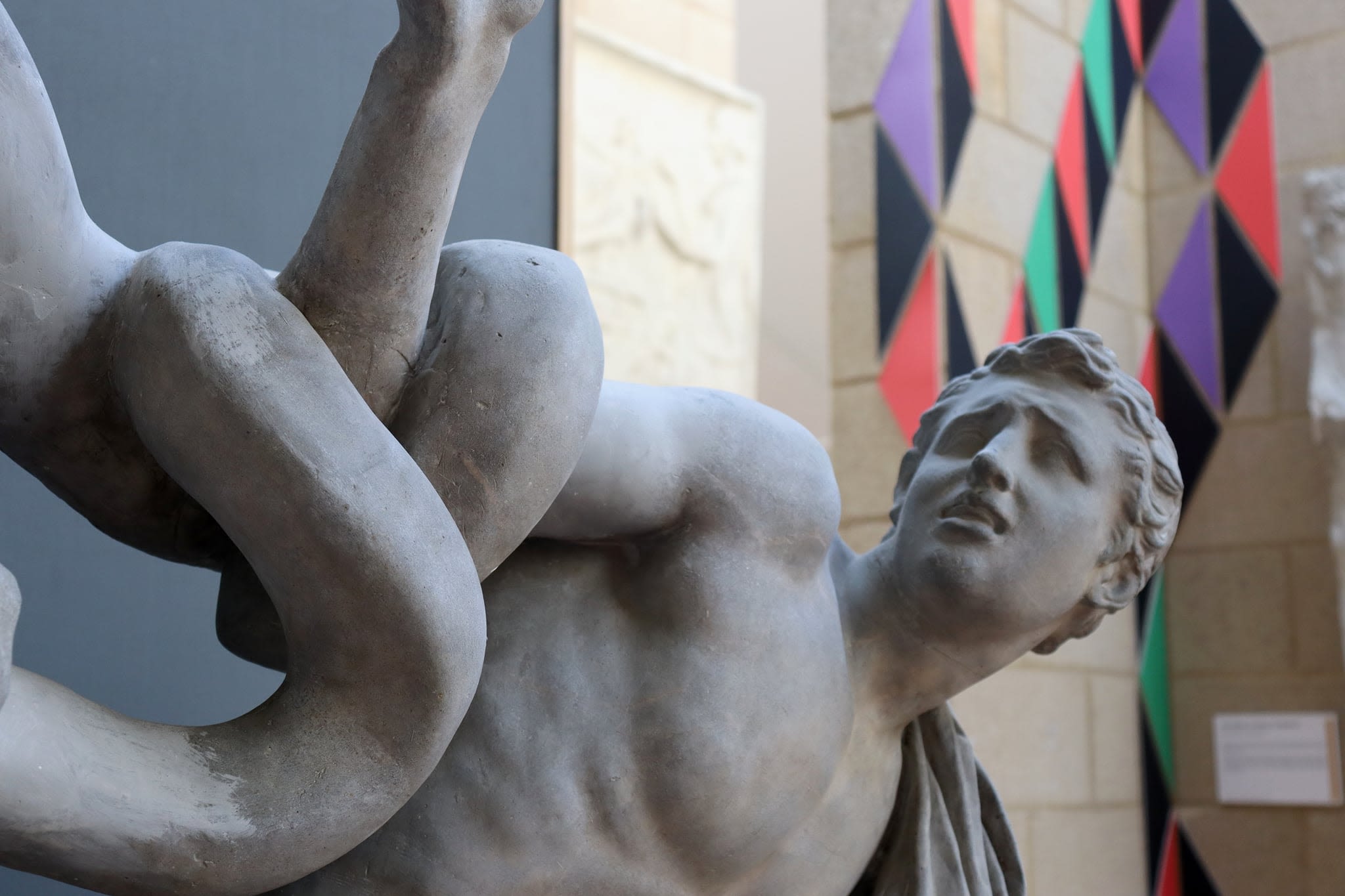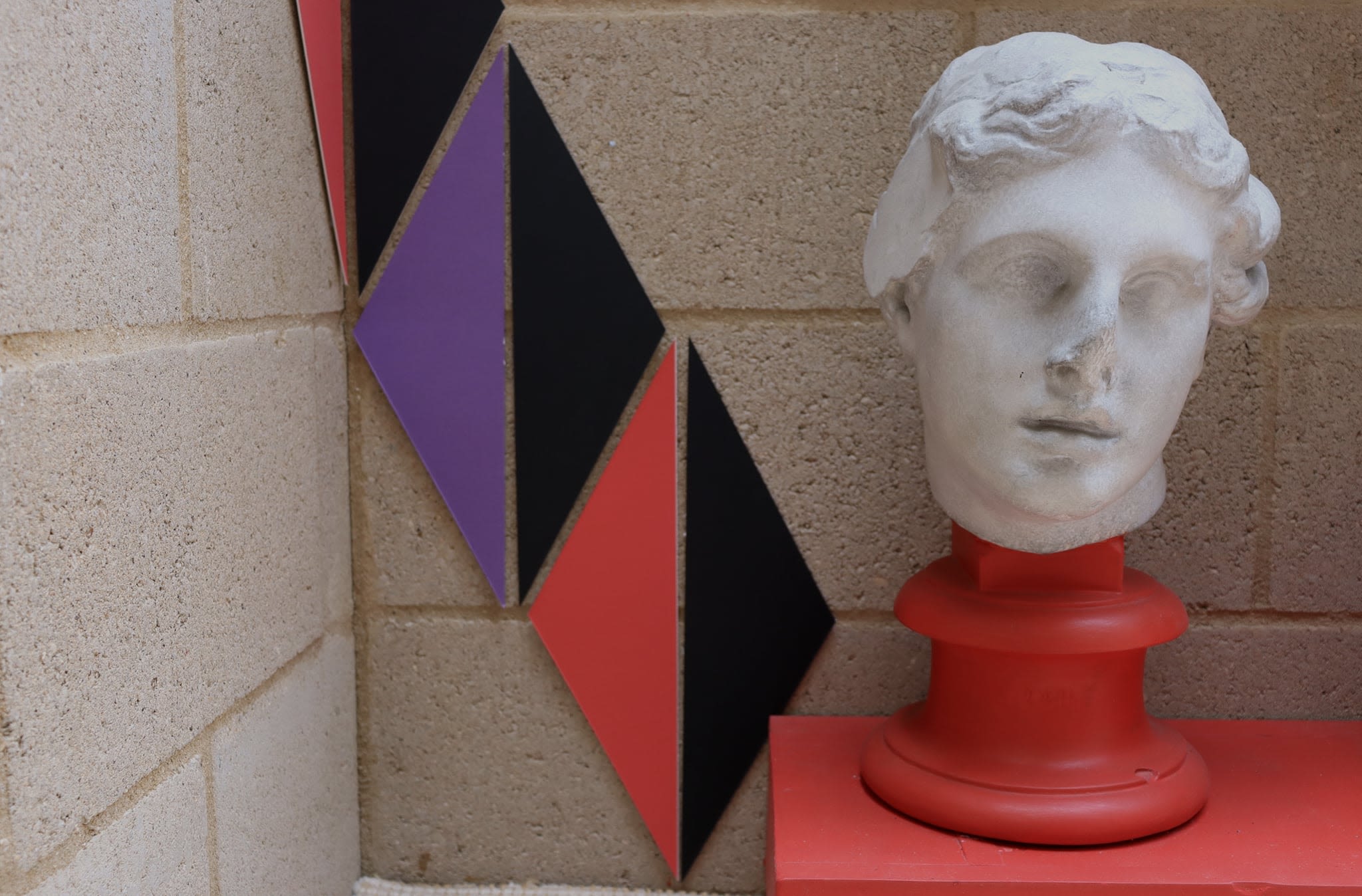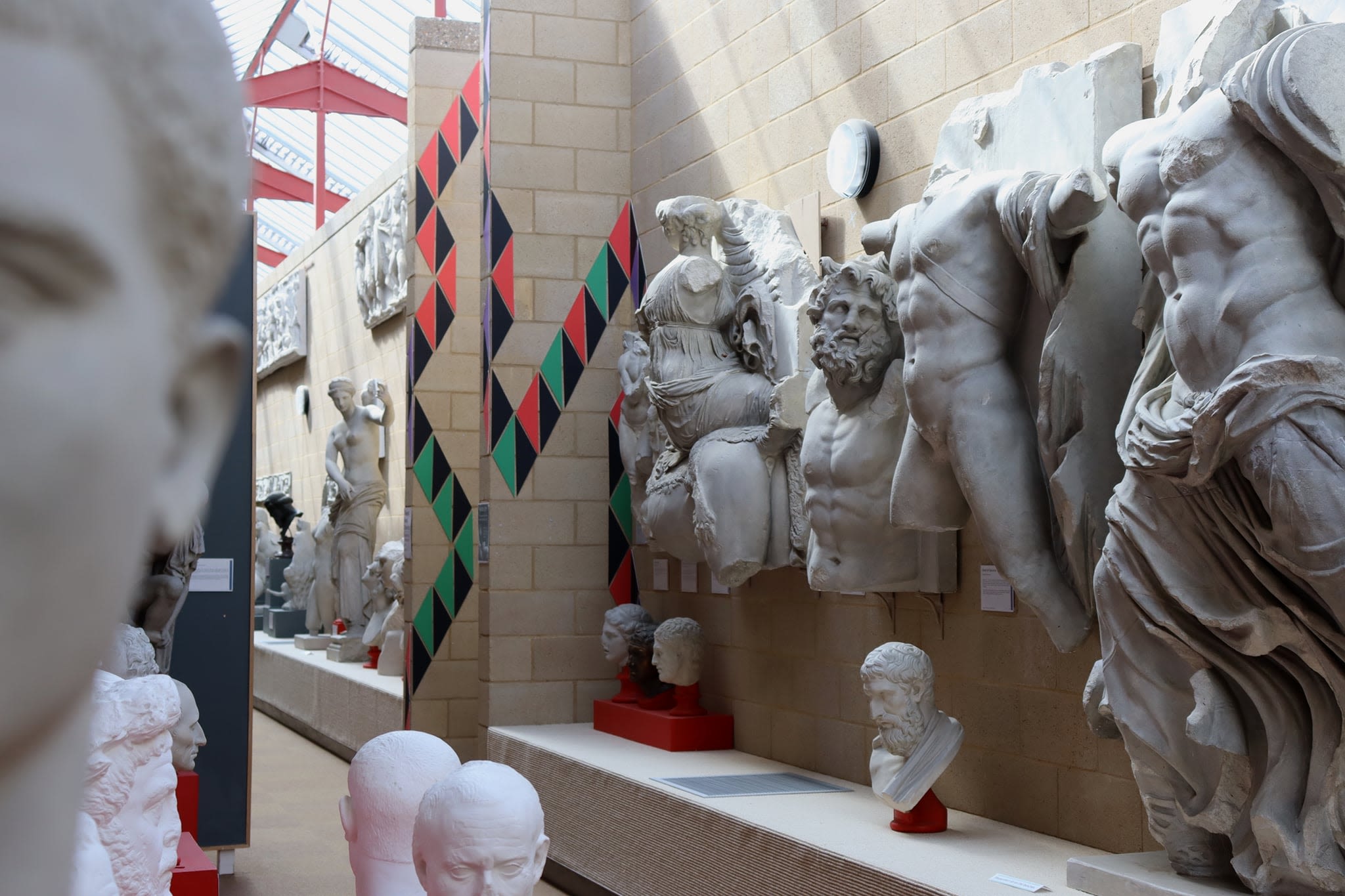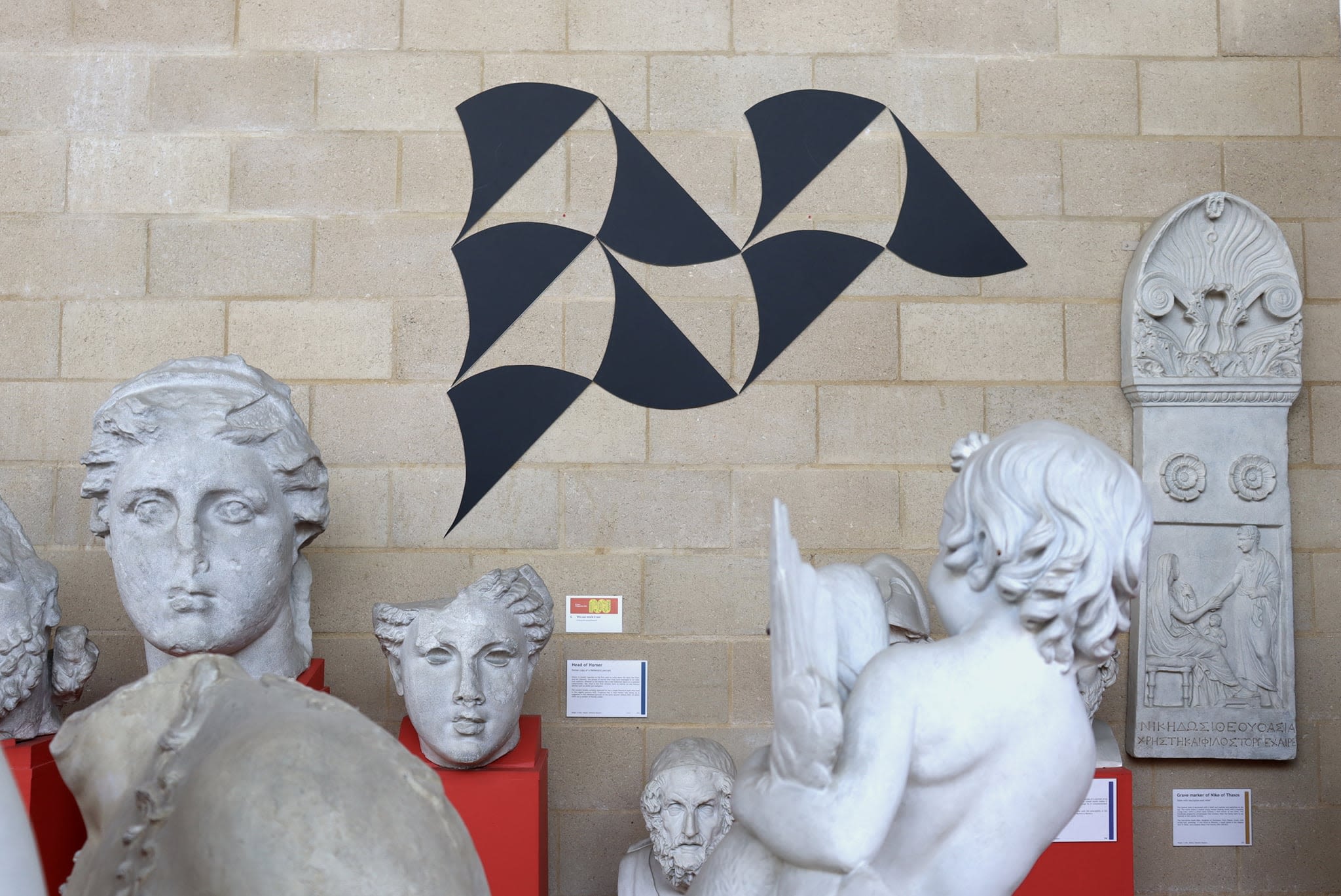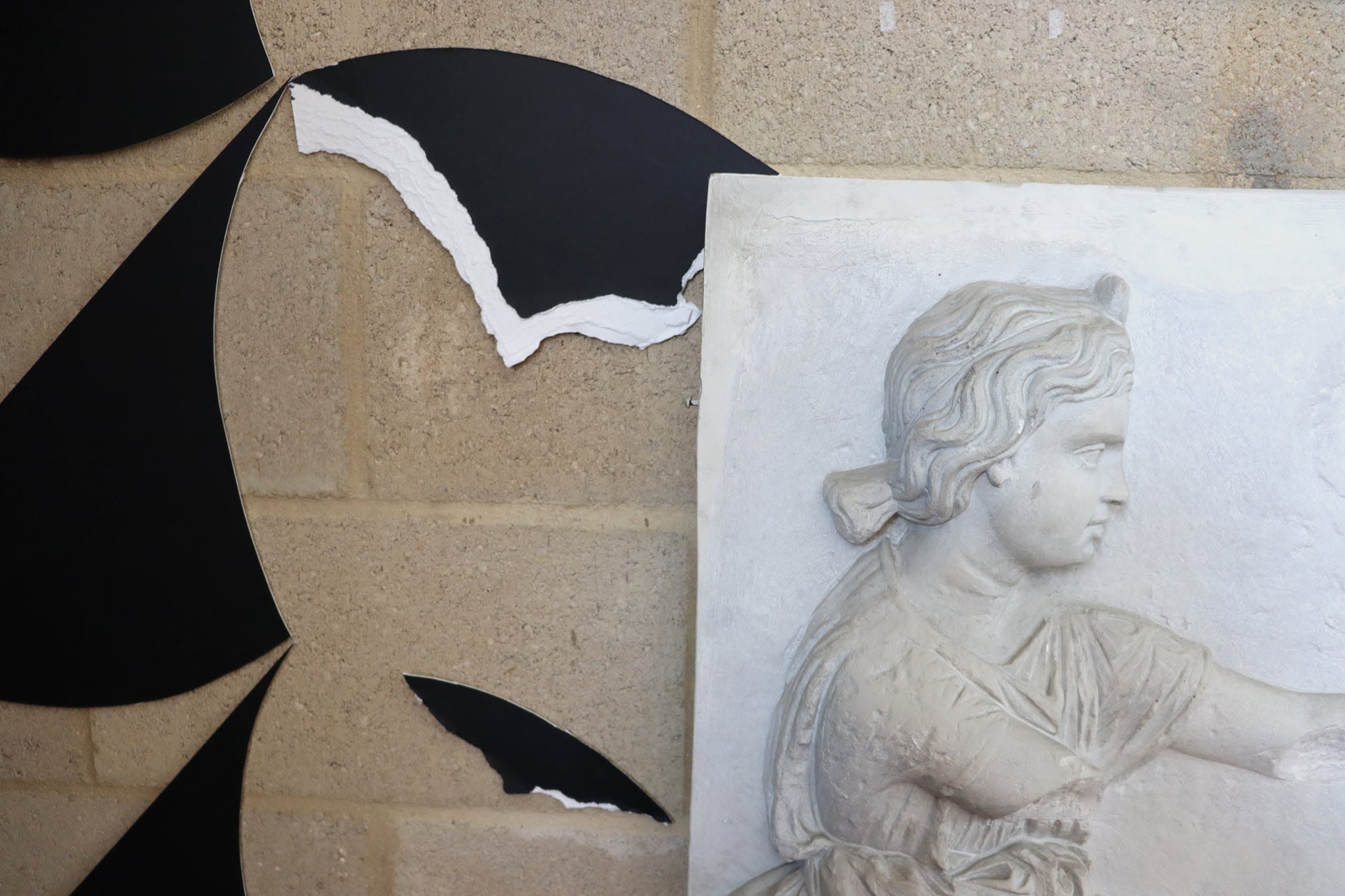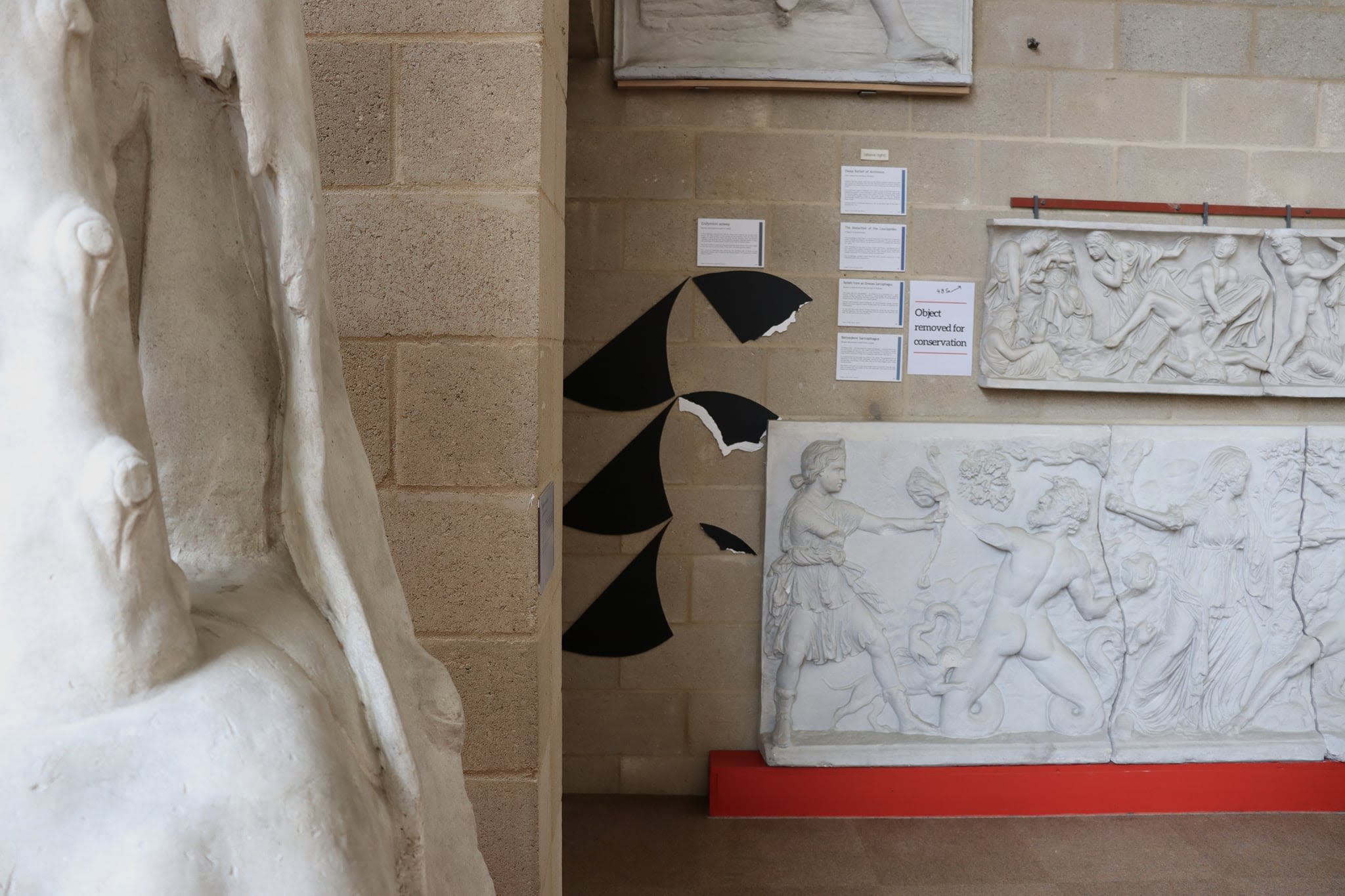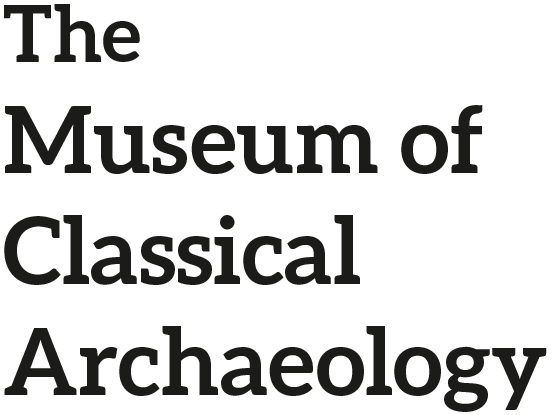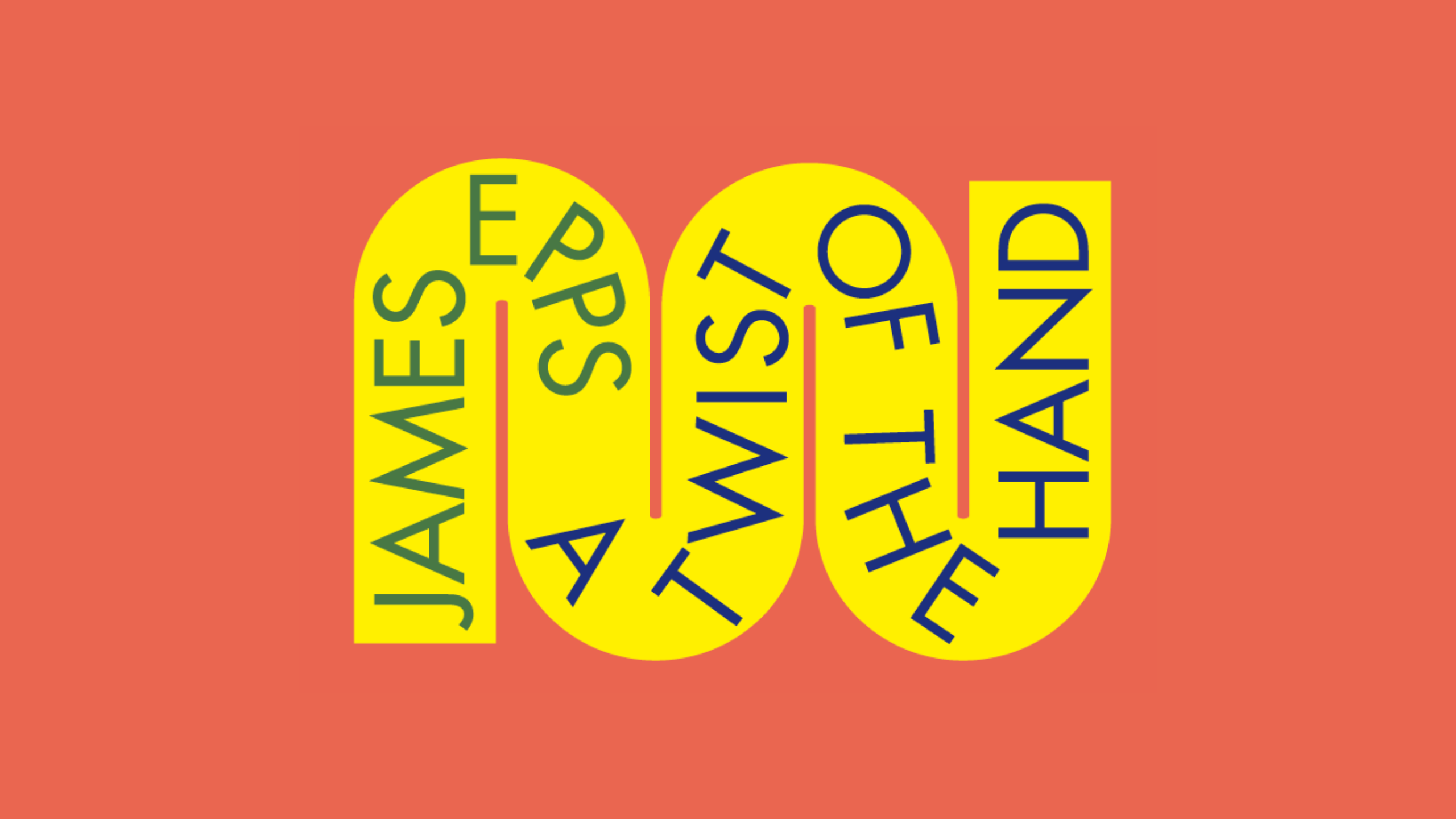
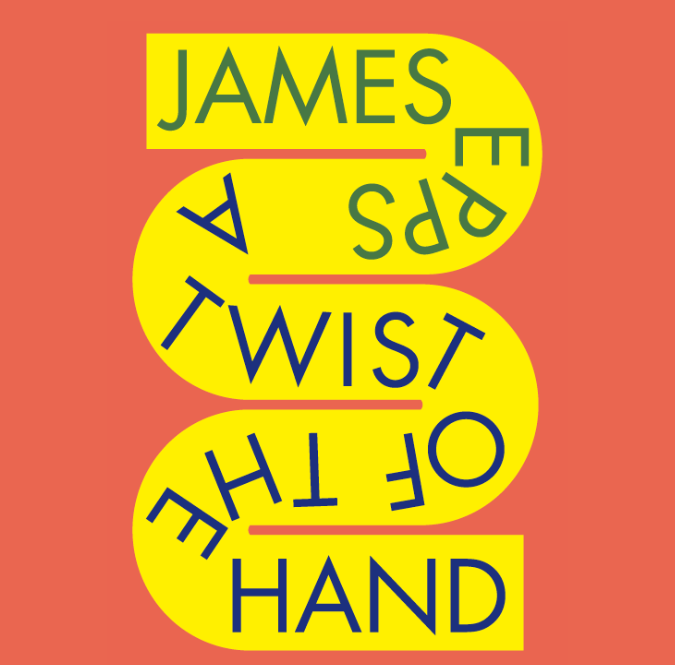
A twist of the hand is an exhibition in the Museum of Classical Archaeology, featuring works by Norwich-based artist James Epps.
James’ practice – and his art – have been shaped by the use of pattern and colour in ancient Rome. Preserved architectural details, remnants of colour, geometric mosaics, and objects all serve as points of departure for the creation of new works, carefully sited among MOCA’s cast collection.
In this online exhibition, James talks us through not only his works but also his process.
All images © James Epps unless otherwise stated.
A twist of the hand is an exhibition in the Museum of Classical Archaeology, featuring works by Norwich-based artist James Epps.
James’ practice – and his art – have been shaped by the use of pattern and colour in ancient Rome. Preserved architectural details, remnants of colour, geometric mosaics, and objects all serve as points of departure for the creation of new works, carefully sited among MOCA’s cast collection.
In this online exhibition, James talks us through not only his works but also his process.
All images © James Epps unless otherwise stated.
I have found myself dazzled by mosaics and seduced by colourful frescos of the classical world. The plaster cast collection of the Museum of Classical Archaeology has been a route back to these places for me.
These casts also have their own lives independent of the sculptures they replicate, in the collection new relationships and stories emerge. I have sought to make artworks that contribute to these dialogues by looking at how artists and makers of the classical world have worked with form, pattern and colour, questions that direct my own work today.
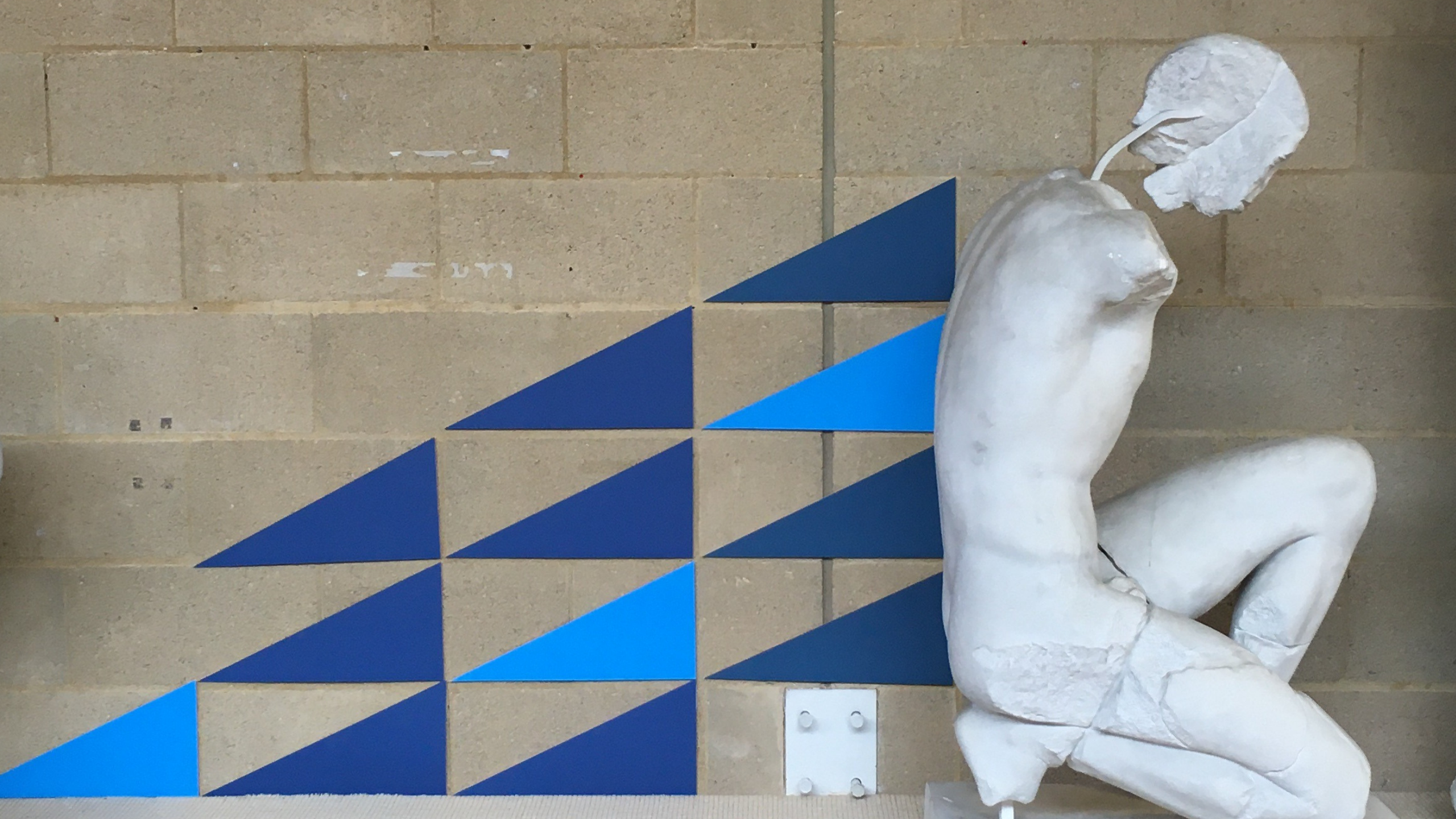
Image Copyright: Museum of Classical Archaeology
Image Copyright: Museum of Classical Archaeology
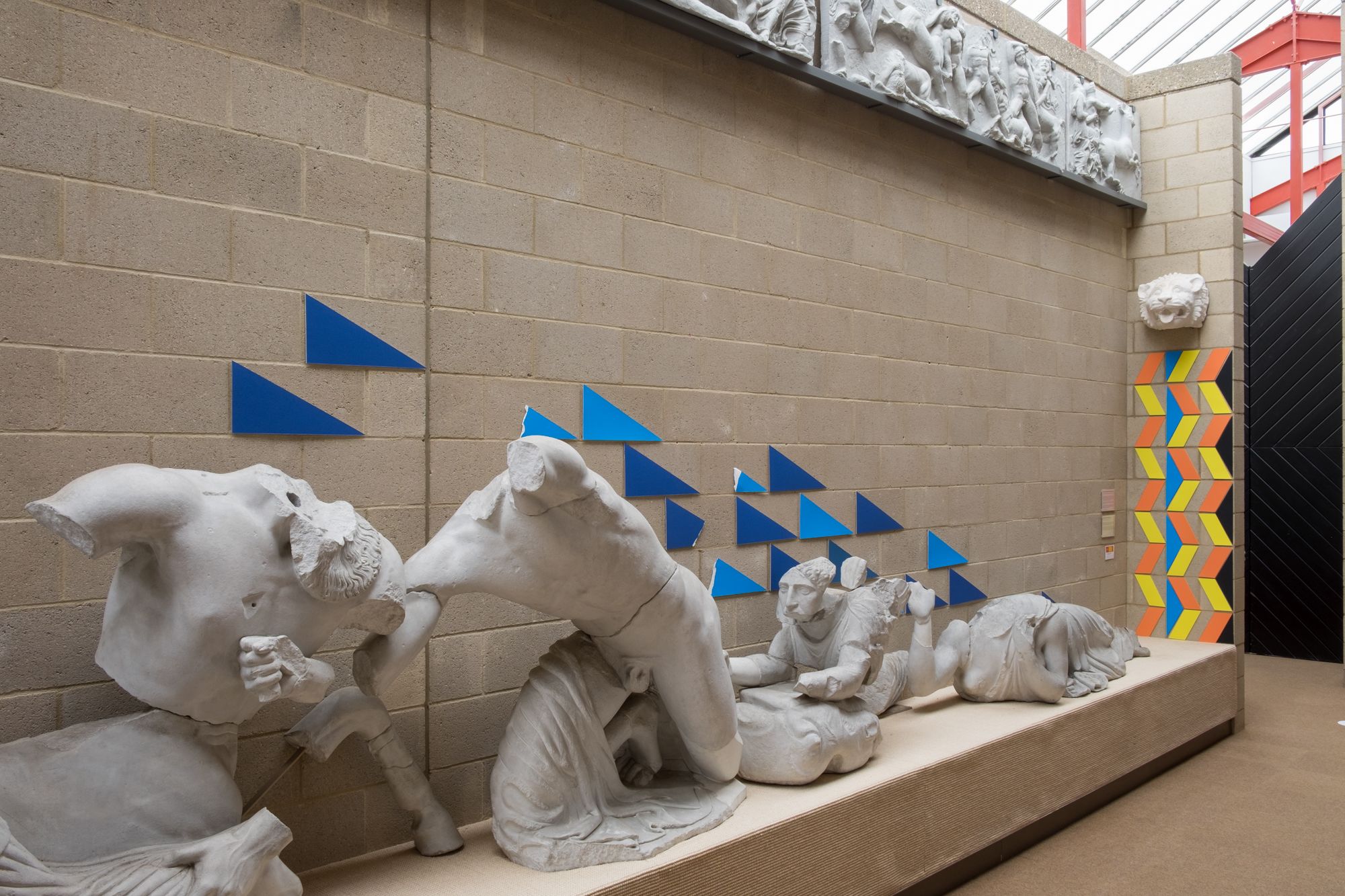
Photography: Glen Jamieson
Photography: Glen Jamieson
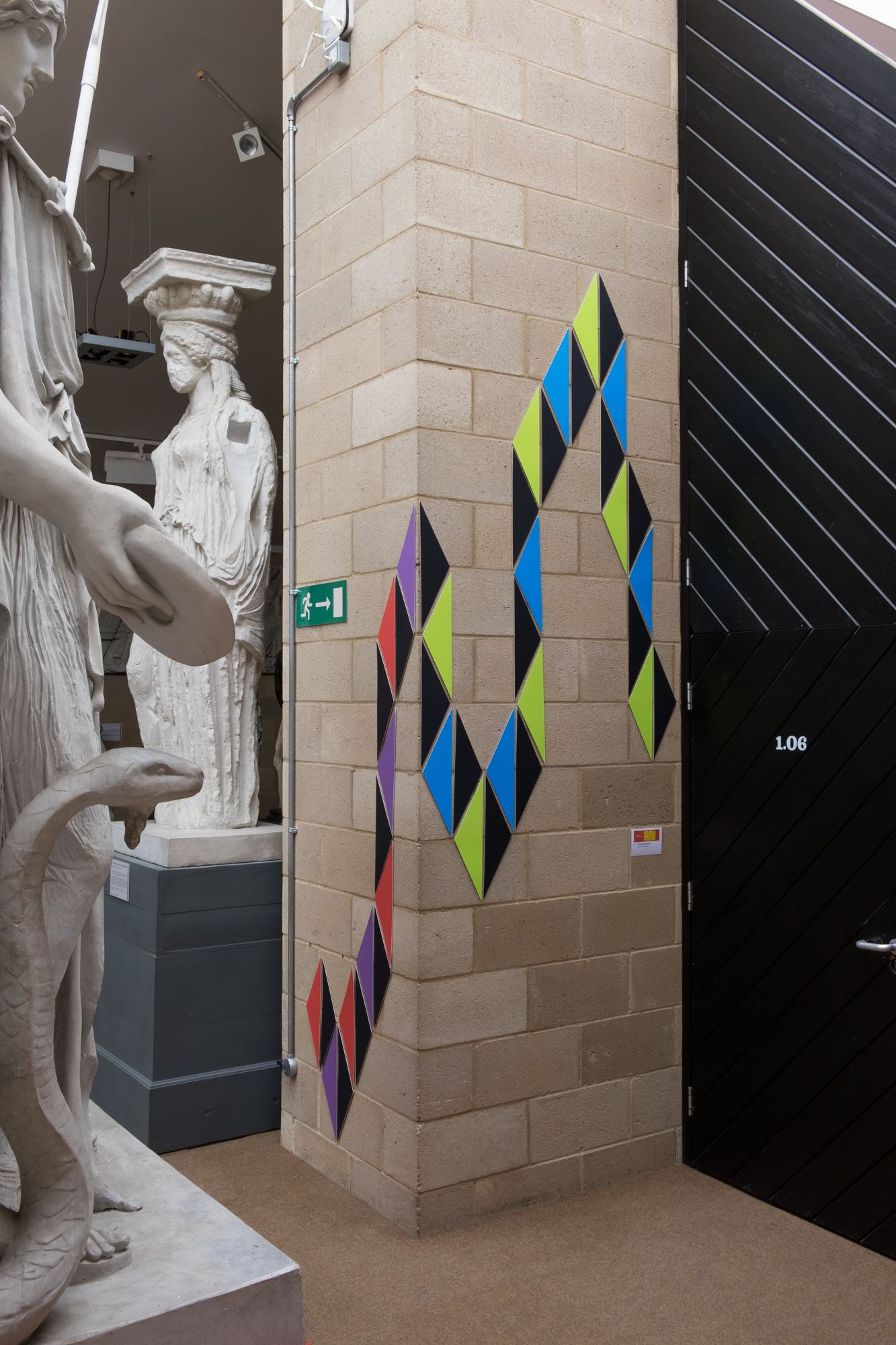
Photography: Glen Jamieson
Photography: Glen Jamieson
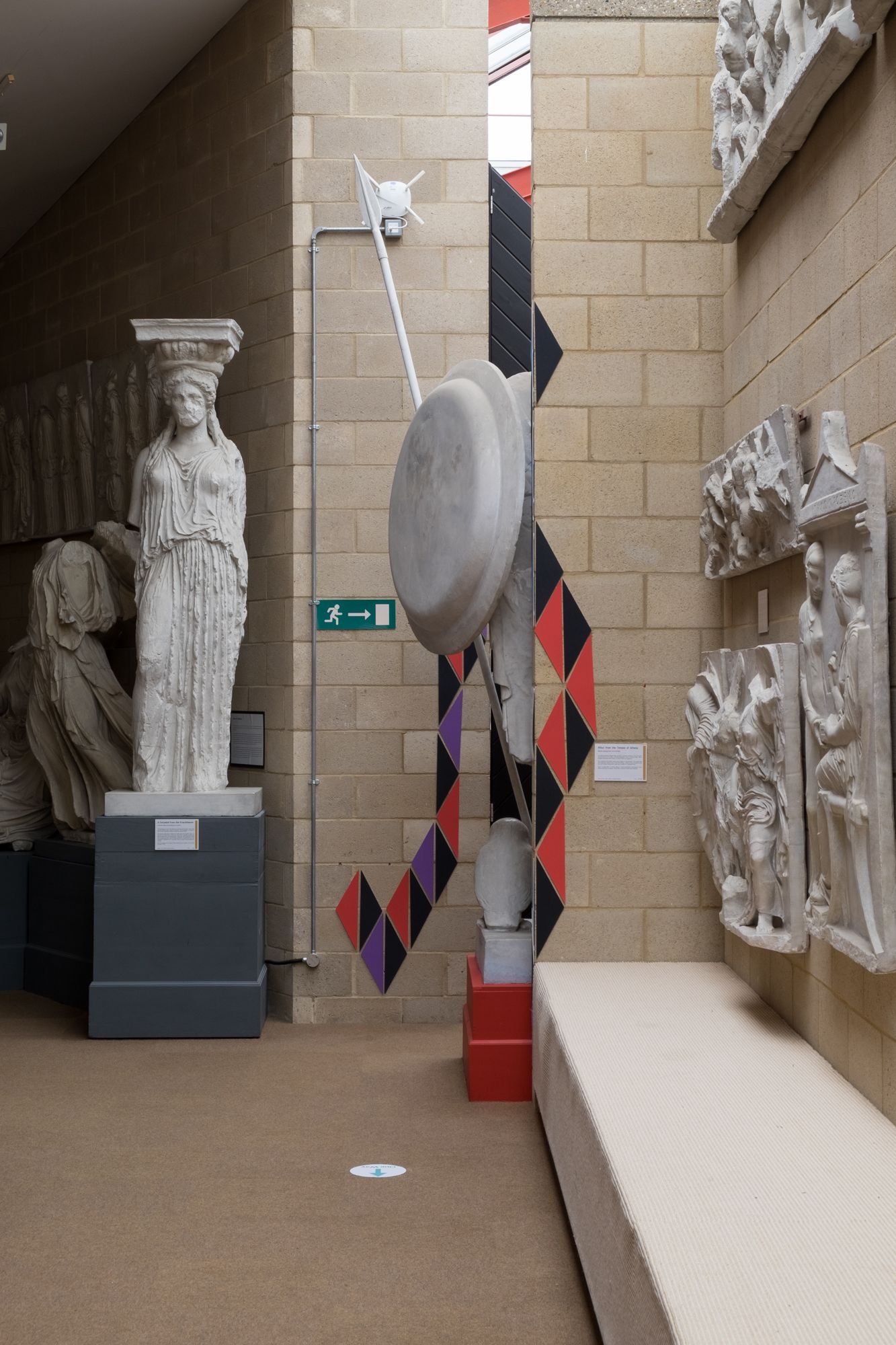
Photography: Glen Jamieson
Photography: Glen Jamieson
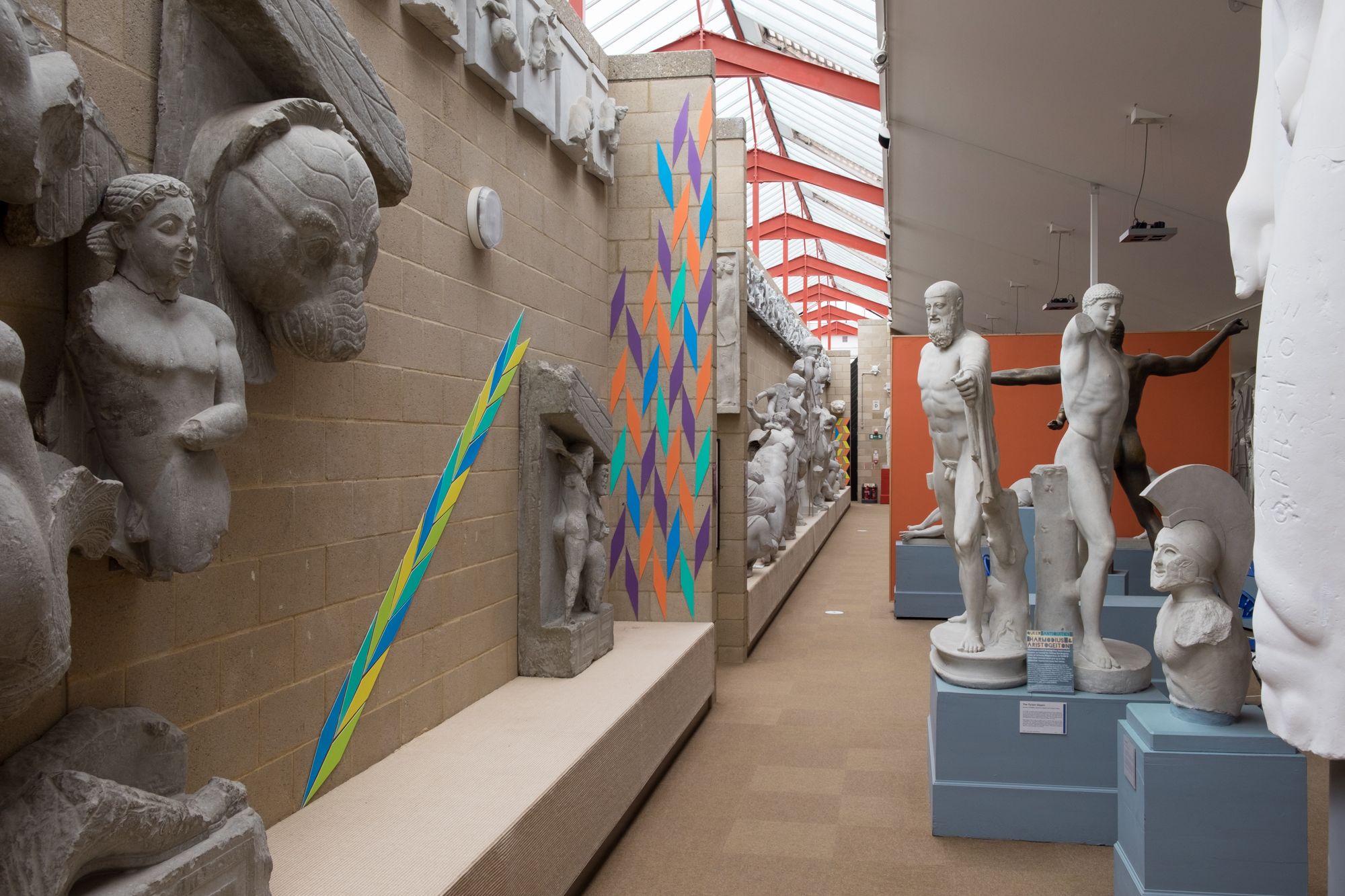

Photography: Glen Jamieson
Photography: Glen Jamieson
Laocoön sculpture group in Cambridge and Rome
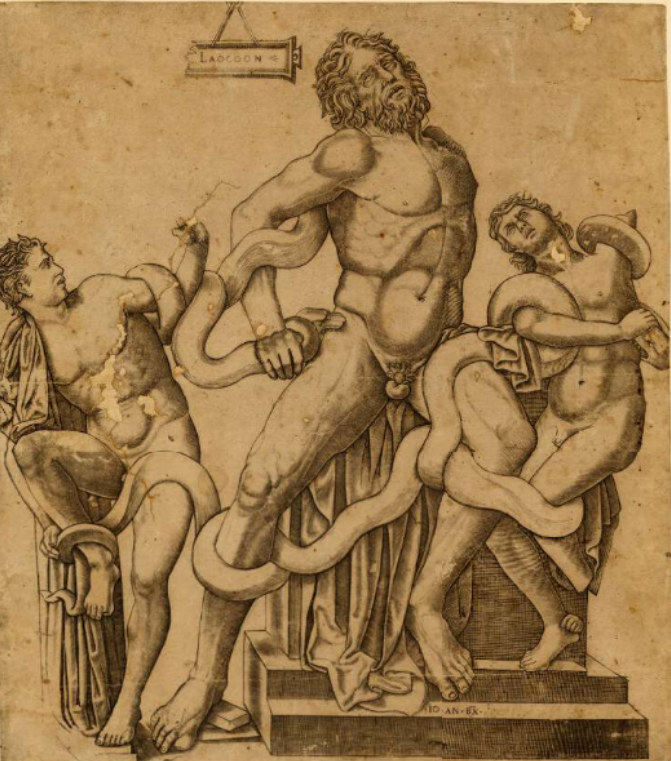
© The Trustees of the British Museum. Early 16th Century print by Giovanni Antonio da Brescia, before the arms were restored (British Museum: 1845,0825.707)
From reading about this sculpture, I knew the arm of the Laocoön in Cambridge is in a different position to that on the original sculpture in the Vatican. On making a trip to Rome, I took a picture of the Cambridge version with me to compare the two groups for the benefit of my own eyes. As I looked I noticed that the left child’s arm is extended in the Cambridge version whereas the Vatican’s is missing completely. Looking towards the elder of the two sons, I see one hand is missing on the Vatican version, whereas in Cambridge the fingers reach out. I began to consider how these differences change the balance between the figures and the serpents. Where could these other parts have gone?
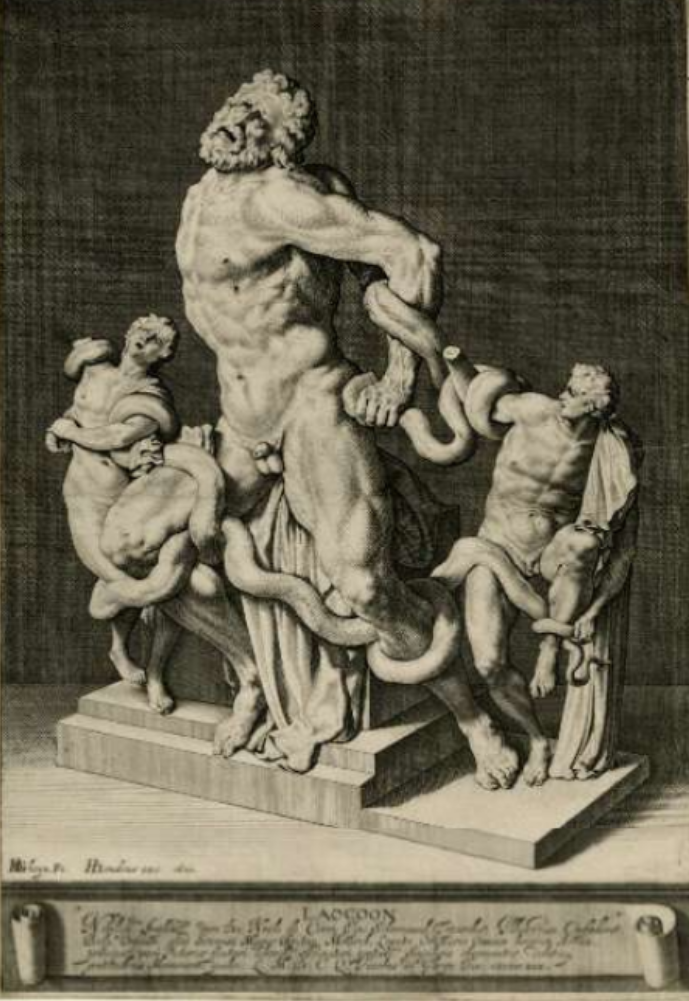
© The Trustees of the British Museum. 1619 etching by Jacques de Gheyn III, before the arms were restored (British Museum: 1917,1208.499).
I have been reflecting upon how this sculpture continues to change, probably a Roman copy of a Greek sculpture, transformed into plaster here in Cambridge. I’m still unsure about who it actually was that sent the serpents coiled around the figures’ limbs, which figures were killed by these monsters and what their crimes were. The story of Laocoön seems to shift in the same way that the marble and plaster limbs do not remain in a fixed position. Virgil’s Aeneid describes the Laocoön’s struggle against the serpents: ‘His hands strove frantically to wrench the knots apart.’ The limbs of these sculptures seem to perpetually keep on moving.

© The Trustees of the British Museum. Early 16th Century print by Giovanni Antonio da Brescia, before the arms were restored (British Museum: 1845,0825.707)
© The Trustees of the British Museum. Early 16th Century print by Giovanni Antonio da Brescia, before the arms were restored (British Museum: 1845,0825.707)

© The Trustees of the British Museum. Early 16th Century print by Giovanni Antonio da Brescia, before the arms were restored (British Museum: 1845,0825.707)
© The Trustees of the British Museum. Early 16th Century print by Giovanni Antonio da Brescia, before the arms were restored (British Museum: 1845,0825.707)

© The Trustees of the British Museum. 1619 etching by Jacques de Gheyn III, before the arms were restored (British Museum: 1917,1208.499).
© The Trustees of the British Museum. 1619 etching by Jacques de Gheyn III, before the arms were restored (British Museum: 1917,1208.499).
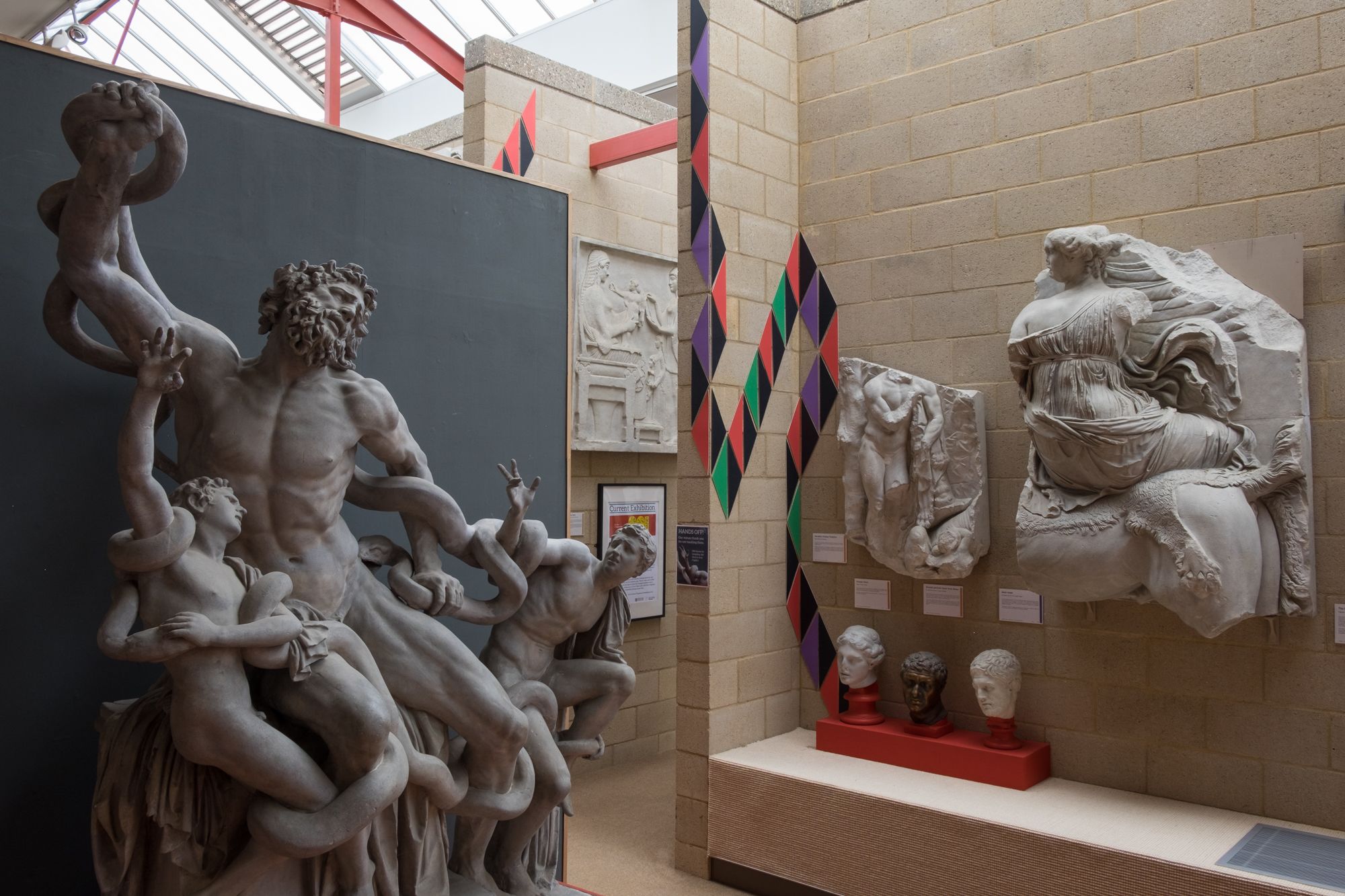
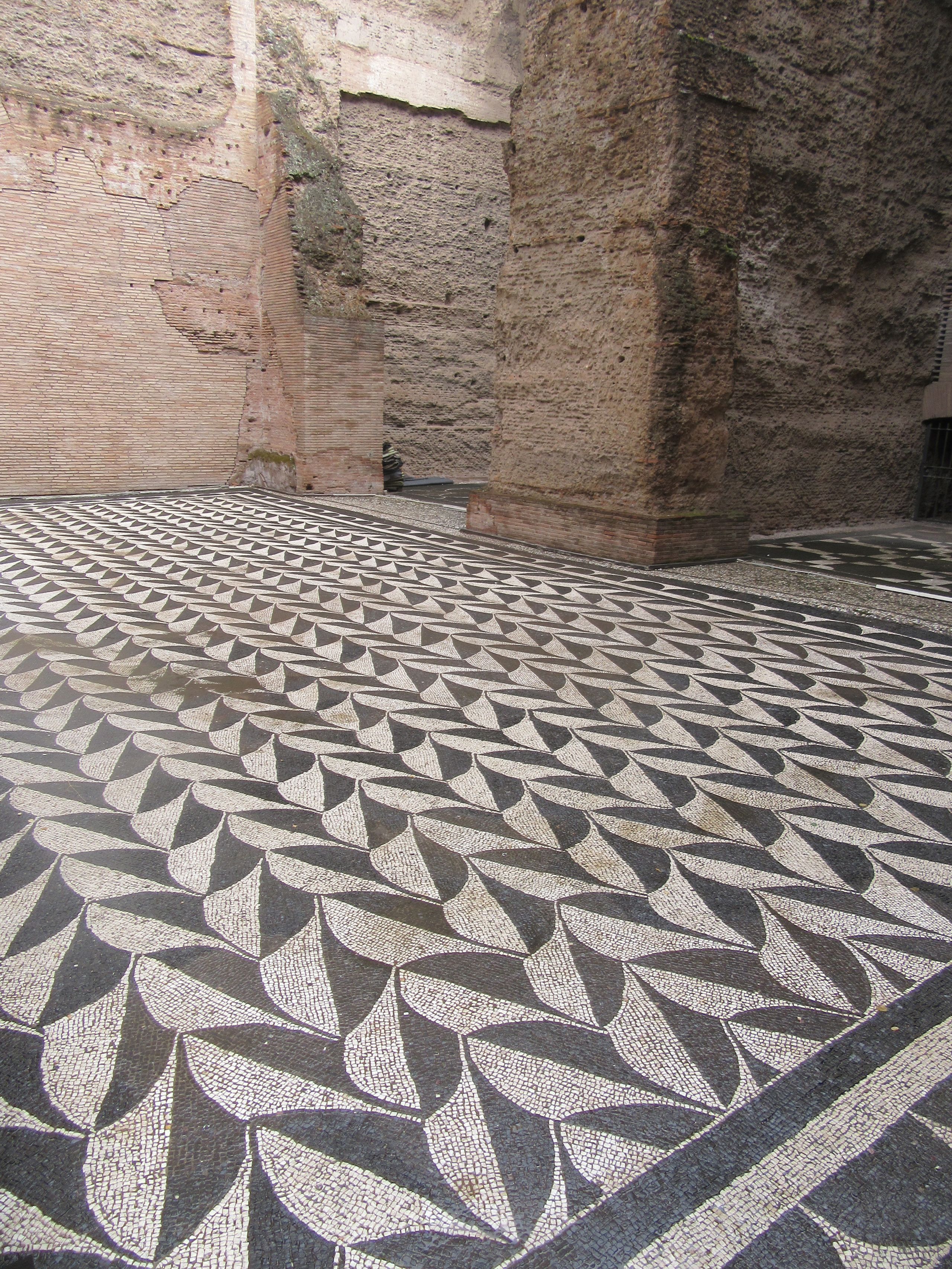
Visiting the Baths of Caracalla
Baths of Caracalla, Rome, constructed 212–216 C.E.
Several of the large rooms are covered with monochrome and polychrome tesserae mosaics.

During an artists’ residency in Rome I was struck by the patterns of the geometric floor at the Baths of Caracalla. I later realised the Museum of Classical Archaeology has a cast of the Farnese Hercules, who once rested in this same bath house having completed his labors.
Recently I went back to view these mosaics in more detail and to think about how the pattern operates in-situ. I wanted to record the size of each scale-like shape that forms the mosaic pattern. Not having a tape measure to hand I walked alongside them and got a sense of how each motif compared to the size of my own foot (I could then measure the length of my shoe once back home). The more I looked at these patterns, the more I noticed the sizes of each scale varied from one to another. The shape of the curve was inconsistent too. I realised a charm in these inconsistencies: the pattern is strong enough to absorb these variants. My work in the studio equally could allow for some level of imprecision.
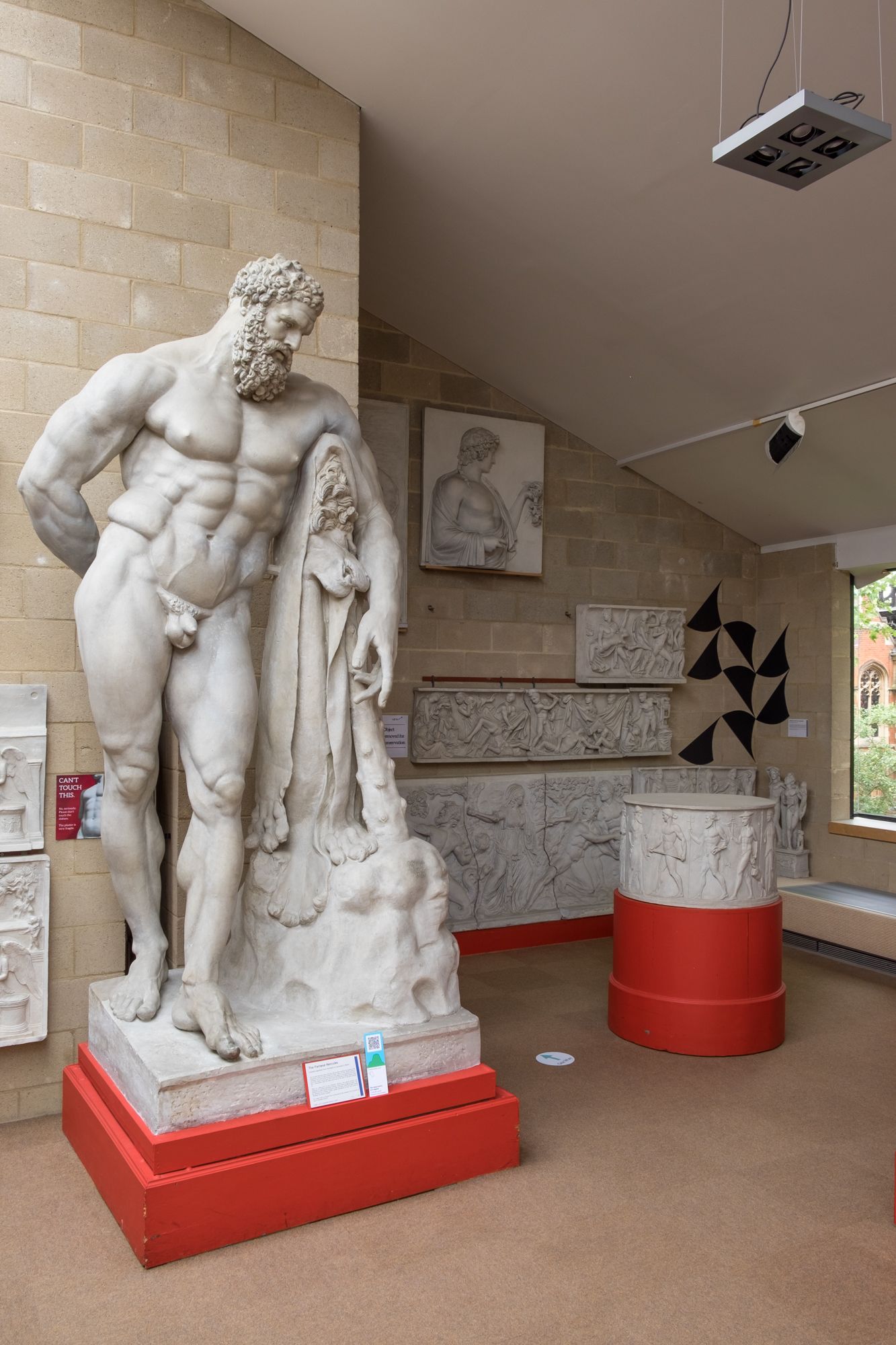
Photography: Glen Jamieson
Photography: Glen Jamieson
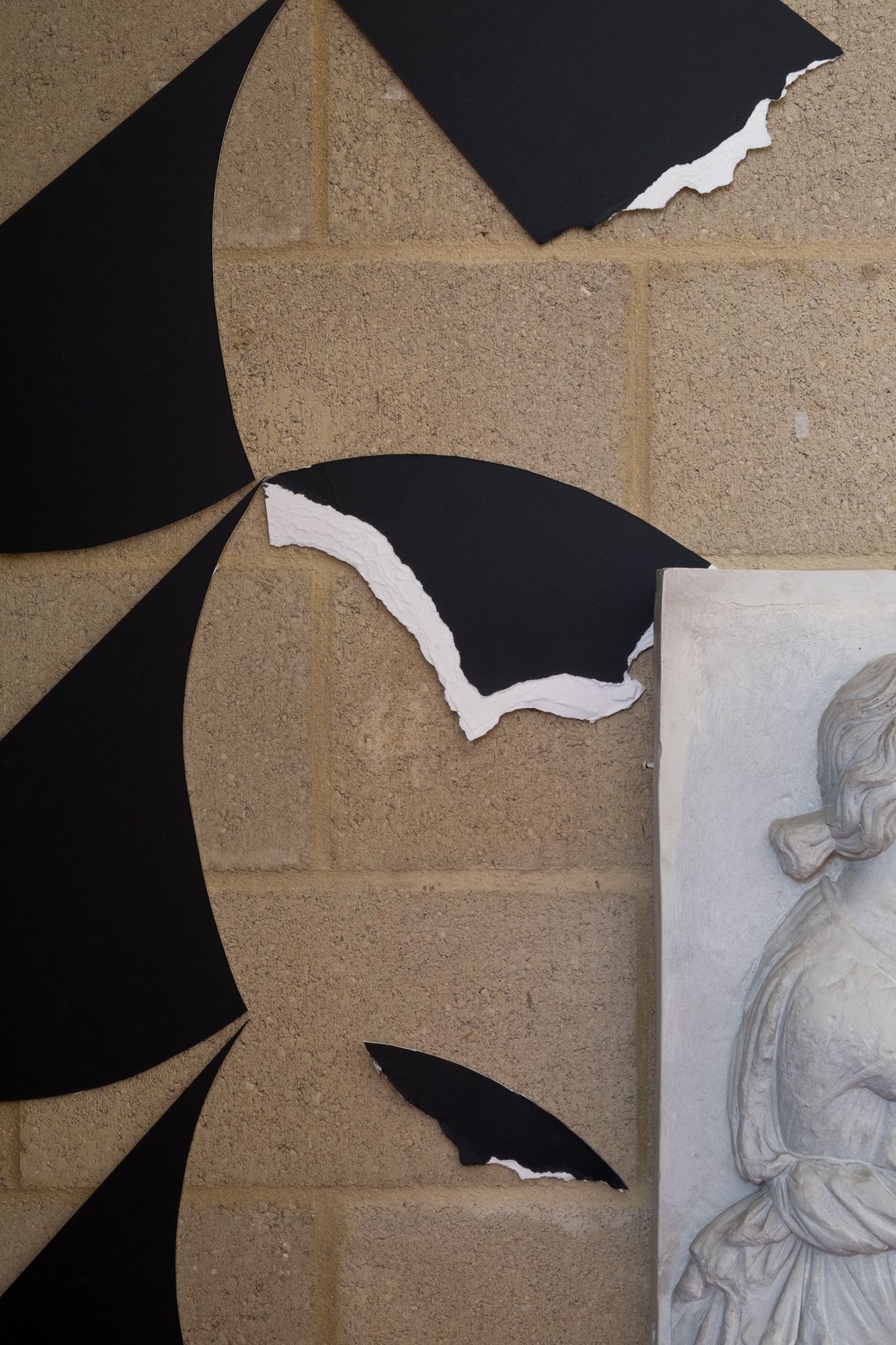
Photography: Glen Jamieson
Photography: Glen Jamieson
Colour in Greece and Rome
I have seen a variety of Roman frescoes, coloured mosaics, and museum reconstructions to know that the worlds of ancient Greece and Rome were more colourful than austere white marble. In making artworks for the museum my choices of colour have been subjective, based on, for example, what colours the idea of a temple in Corfu evokes for me rather than any attempt at an accurate reconstruction.
For this exhibition my use of colour allows the opportunity to differentiate pattern, make connections and draw the eye through the gallery space. I suspect these ambitions share an intentionality in common with artists and craftsmen using colour back in Rome and Greece.
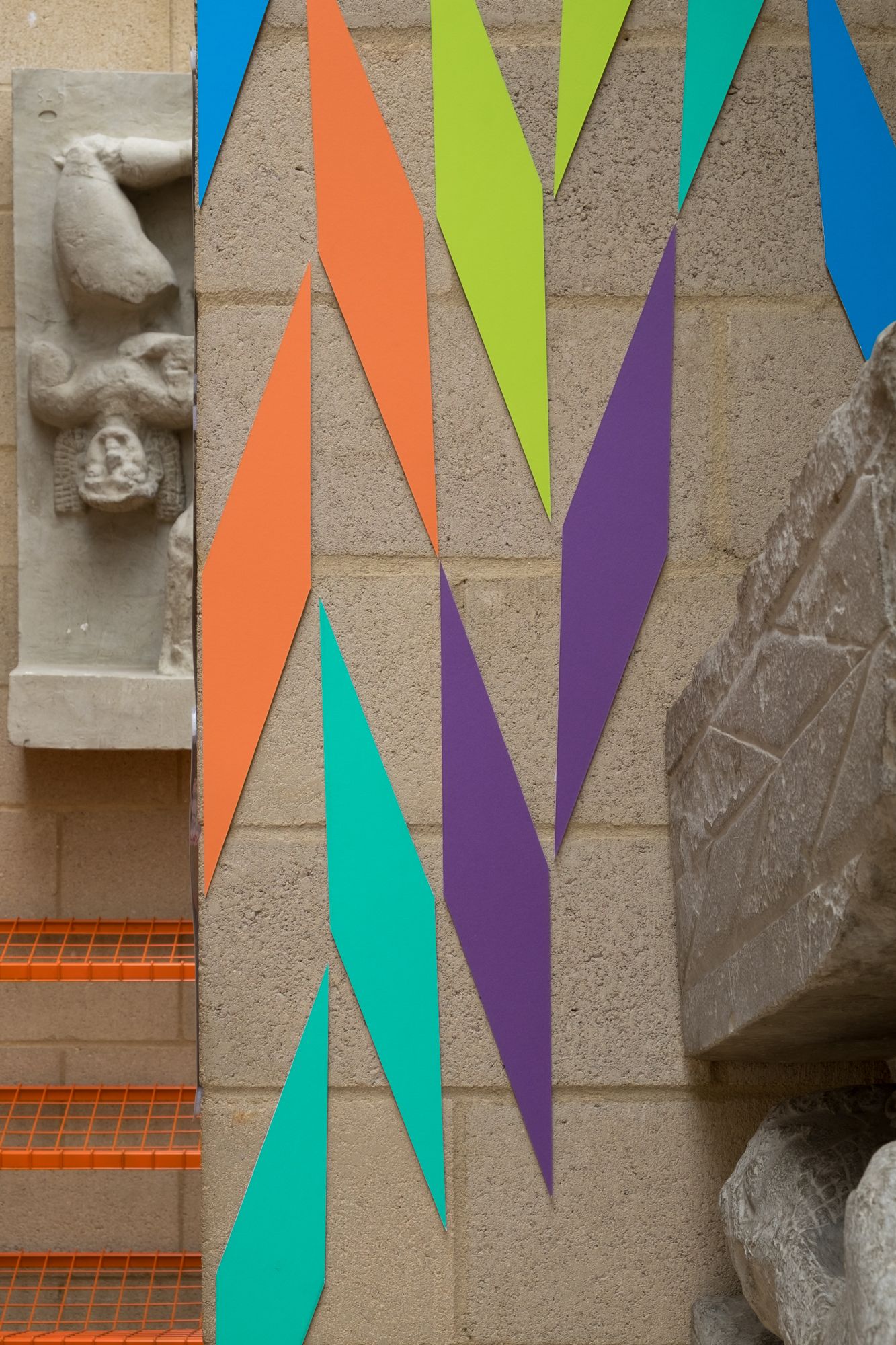
Photography: Glen Jamieson
Photography: Glen Jamieson
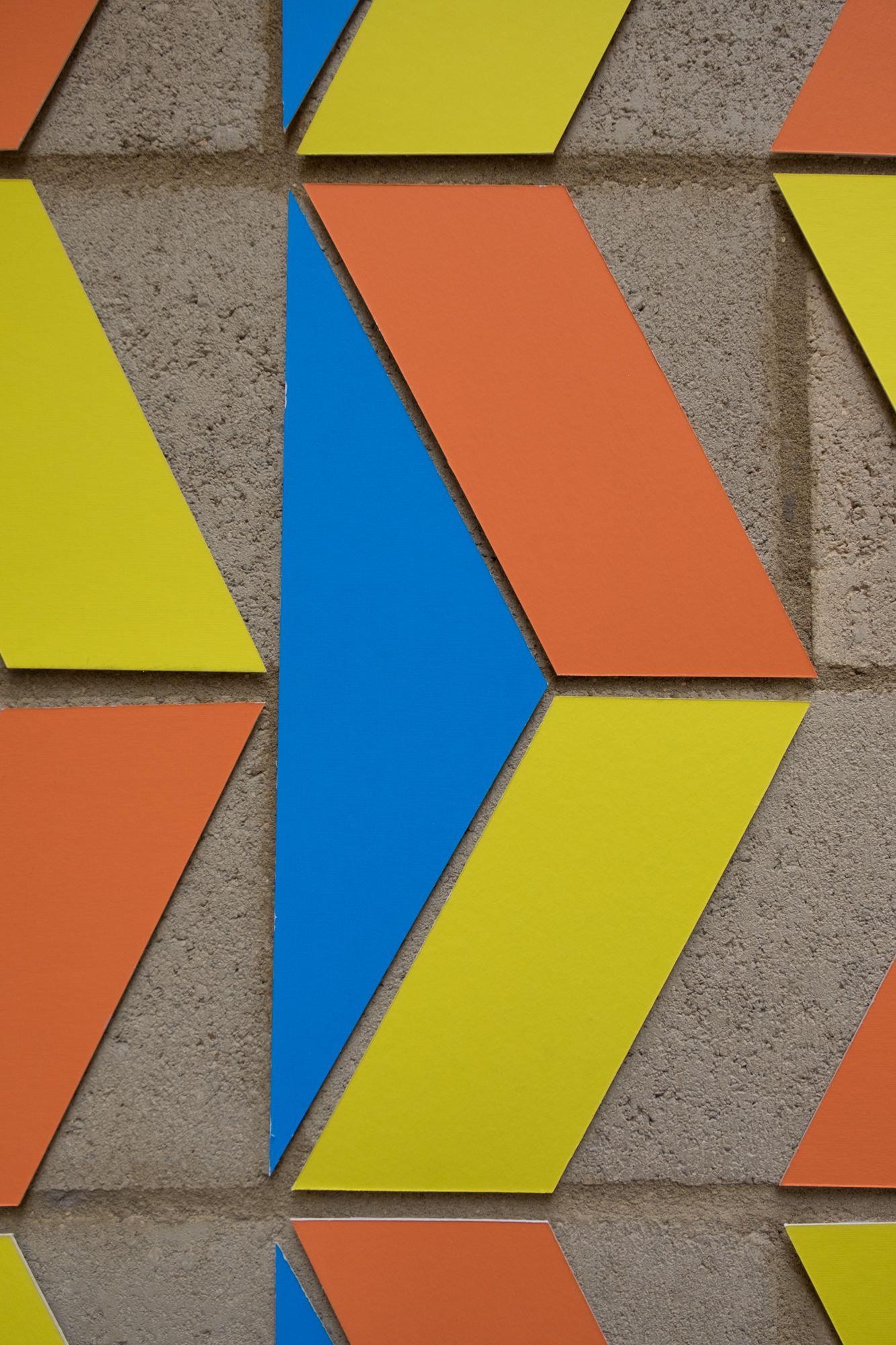
Photography: Glen Jamieson
Photography: Glen Jamieson
Notes on a Roman Set Square
Bronze Roman Set Square, British Museum
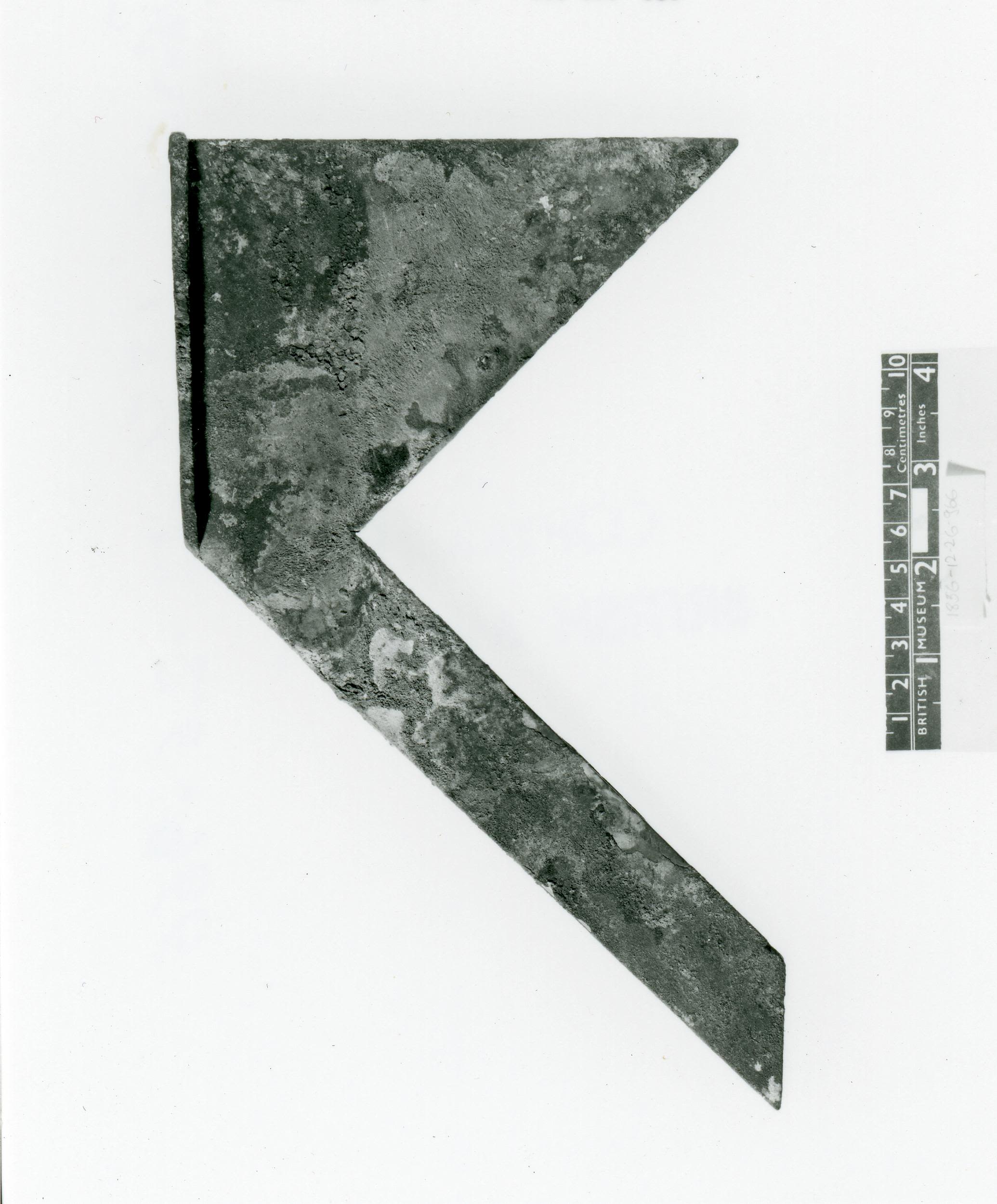
© The Trustees of the British Museum
(Museum number: 1856,1226.966)
Looking though Else Christie Kielland’s Geometry in Greek Art (1984), I found a Bronze Roman set square that is now part of the British Museum’s collection. Its unusual shape felt closer to a modernist composition than the Classical forms of Roman architecture. The Roman architect Vitruvius wrote of the proportions of the human body in relation to geometry, a methodology echoed in Le Corbusier’s diagrams planning modernist architecture mapped onto the human form.
"Egyptian, Greek or Roman architecture is an architecture of prisms, cubes and cylinders, pyramids or spheres : the Pyramids of Luxor, the Parthenon, the Coliseum, Hadrian’s Villa"
The path between the Classical and the modern is well-trodden. Like Le Corbusier, Kielland has a systematic understanding of how architecture and art operate – both sought to reveal a harmony of proportions through analytic diagrams.
Kielland’s diagrams were initially beguiling to me, my own practice does not operate with such geometric precision and complexity. However, I still knew the tool she describes was one that I wanted to use. The Roman set square itself measures the length of a foot, but I have scaled up the measurements of the set square to fit the dimension of the sheets of mountboard that I have been using. Having cut this shape, I have also used the offcuts which are effectively the negative space of the set square, or the very space that the tool would be measuring.
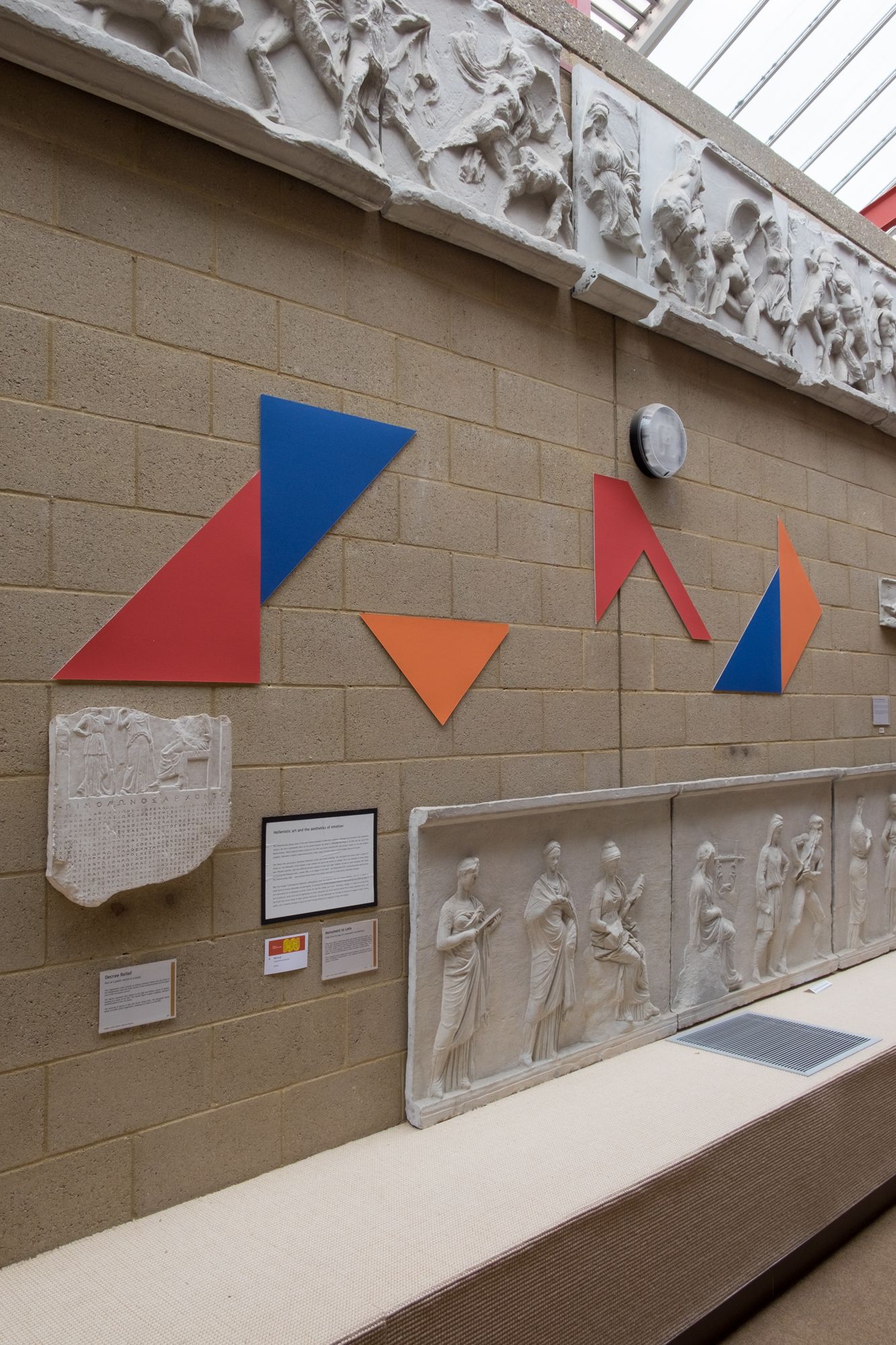
Photography: Glen Jamieson
Photography: Glen Jamieson

Photography: Glen Jamieson
Photography: Glen Jamieson

© The Trustees of the British Museum
© The Trustees of the British Museum
Pottery sherds online catalogue
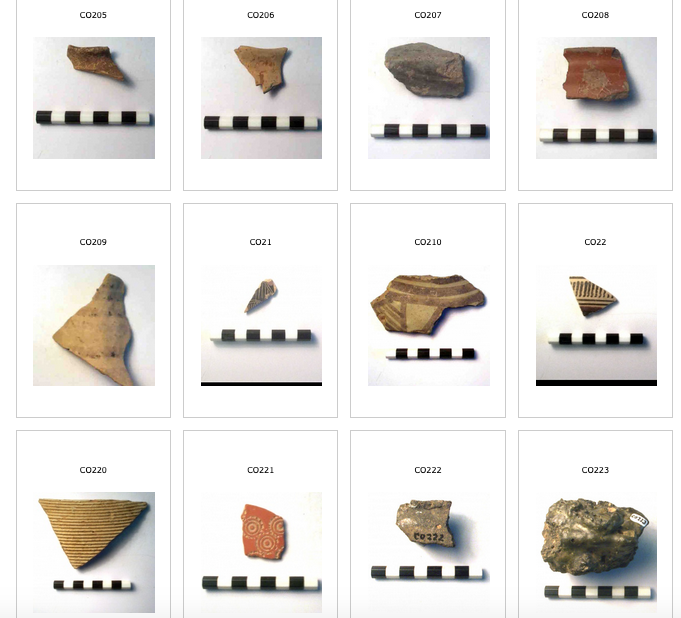
Following the invitation to curate a display cabinet of the museum’s pottery sherds, I decided to work out which are my favourite from the online catalogue. There were too many to choose from, so I made quick decisions and was ruthless about which ones to throw out and which ones to keep. I was drawn by those with gestural marks; others intrigued me with their seemingly familiar patterns. Some of the sherds have very little visual information, just a single band of colour like a tiny minimalist painting.
Having printed out my own personal collection of ancient pottery sherds, I wanted to make some sense of them, so began to categorise them into groups just as I might think about grouping my own artworks:
- Zig-zags
- Greek key
- Triangles
- Horizontal bands
- Vertical bands
- Horizontal and vertical bands
- Hatchings and diamonds
- Zig-zags combined with banding
- Chevrons
- Chequers
- Wavy lines
- Circles and concentric circles
- Dots
- Scales
As sherds they are all key to an original object they were once part of. The decorative pattern on the fragments I am drawn to may have just been a detail of lesser importance on the complete object. Perhaps only once presented as an isolated fragment does it now speak to me.

My sherd collections
Not having any of the museum’s sherds to hand in the studio I used printed versions and drew copies to consider how I could arrange a cabinet of the sherds. It became apparent to me how flat the drawings and printed images are. I wanted to think about the sherds as physical objects. I decided to find a substitute for the materiality of the sherd, so went about breaking modern ceramics into contemporary fragments. These new pottery fragments, the printed images and my drawings all exist in an attempt to be replacements for the ancient fragments in some way, but all fail to reproduce particular aspects of that fragment.
My drawings document the decorative patterns in a simplistic way, reduced to their most basic forms. The printed archival records detail when it was produced, the site where it was found and what style it is classified as. My broken pieces of contemporary pottery fail to replicate any patterns or finish of the sherds, however as objects they catch the light and cast shadows. They highlight the flatness of the photos and paper that I have placed them alongside. They are jagged and irregular, there is something very arbitrary about the new shapes they have each found themselves in.
The original sherds and the substitutes hold an equal place within my arrangements, hierarchies of what is original and authentic have slowly broken down. The replacements for sherds that I have compiled have their own characteristics, much in the same way plaster casts have their own life and qualities separate from the original sculptures they derive from.
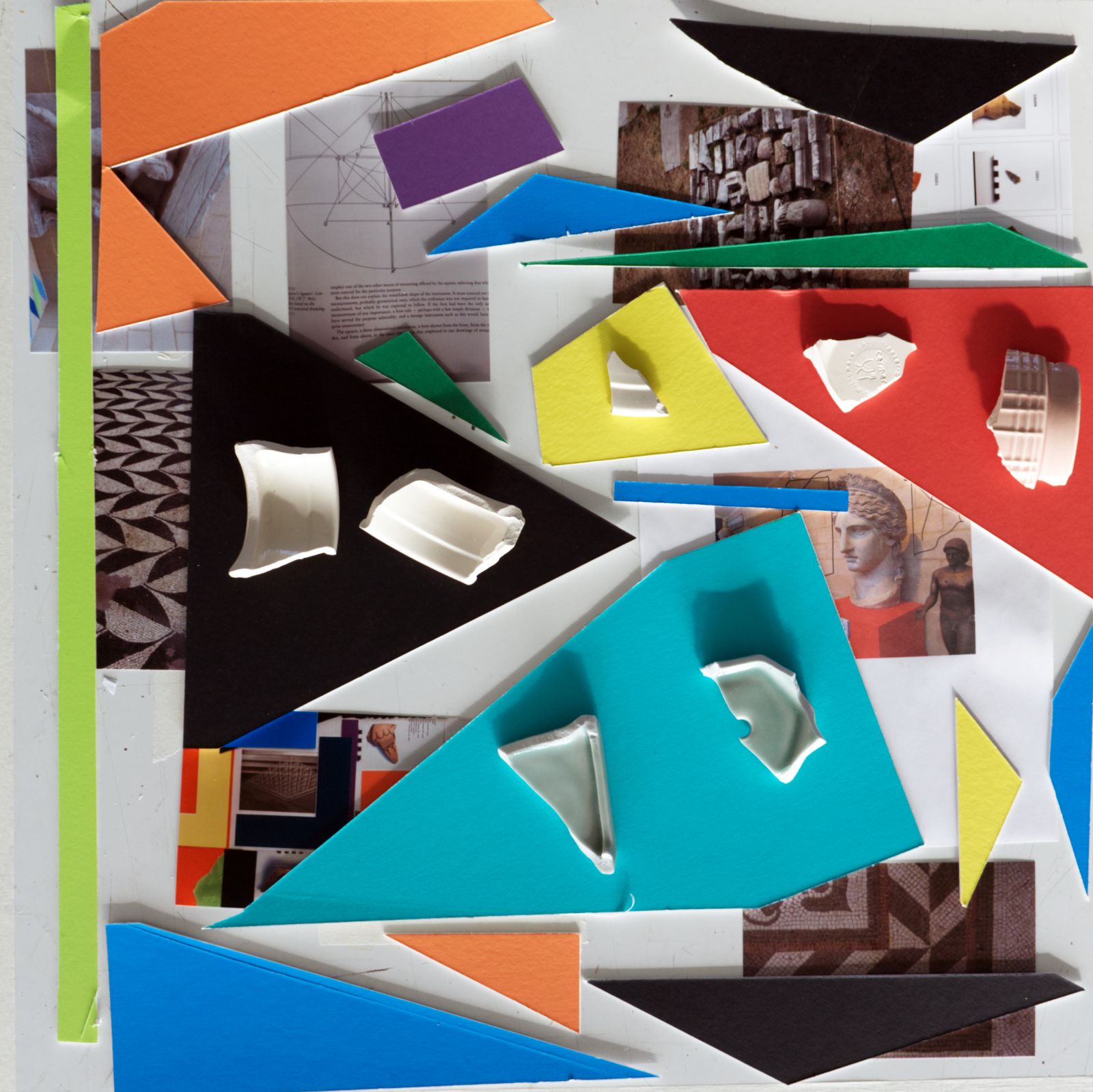
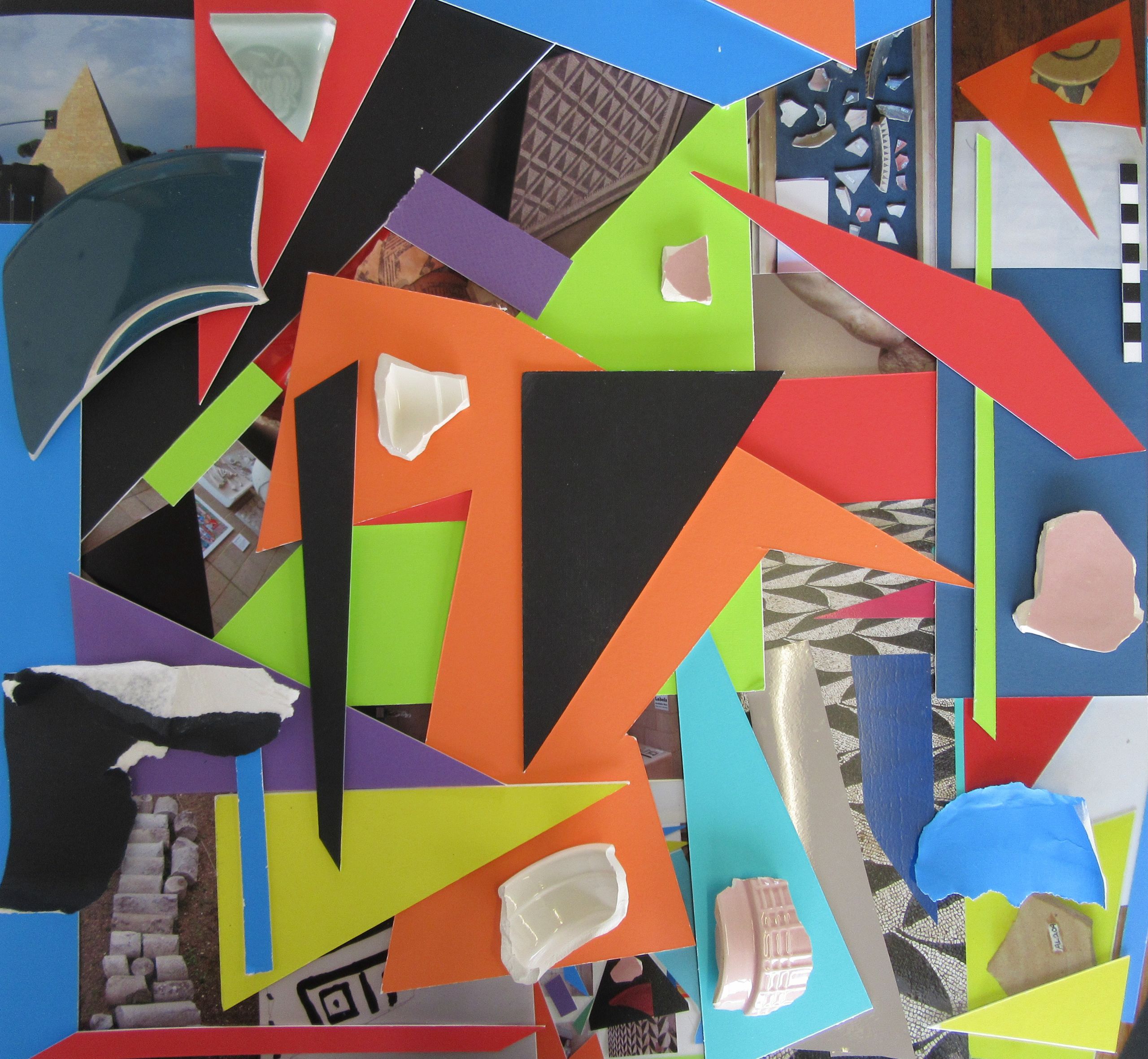
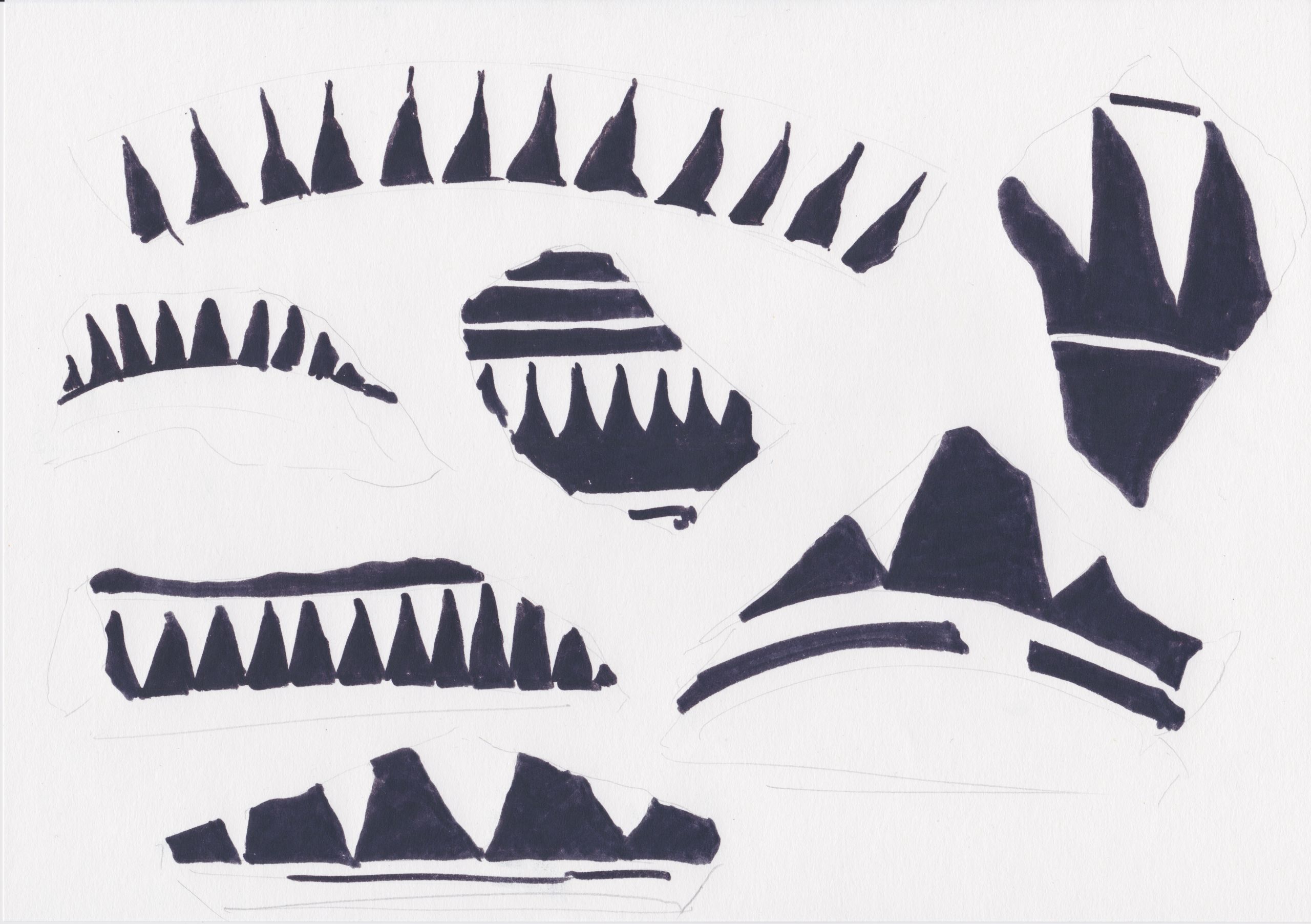
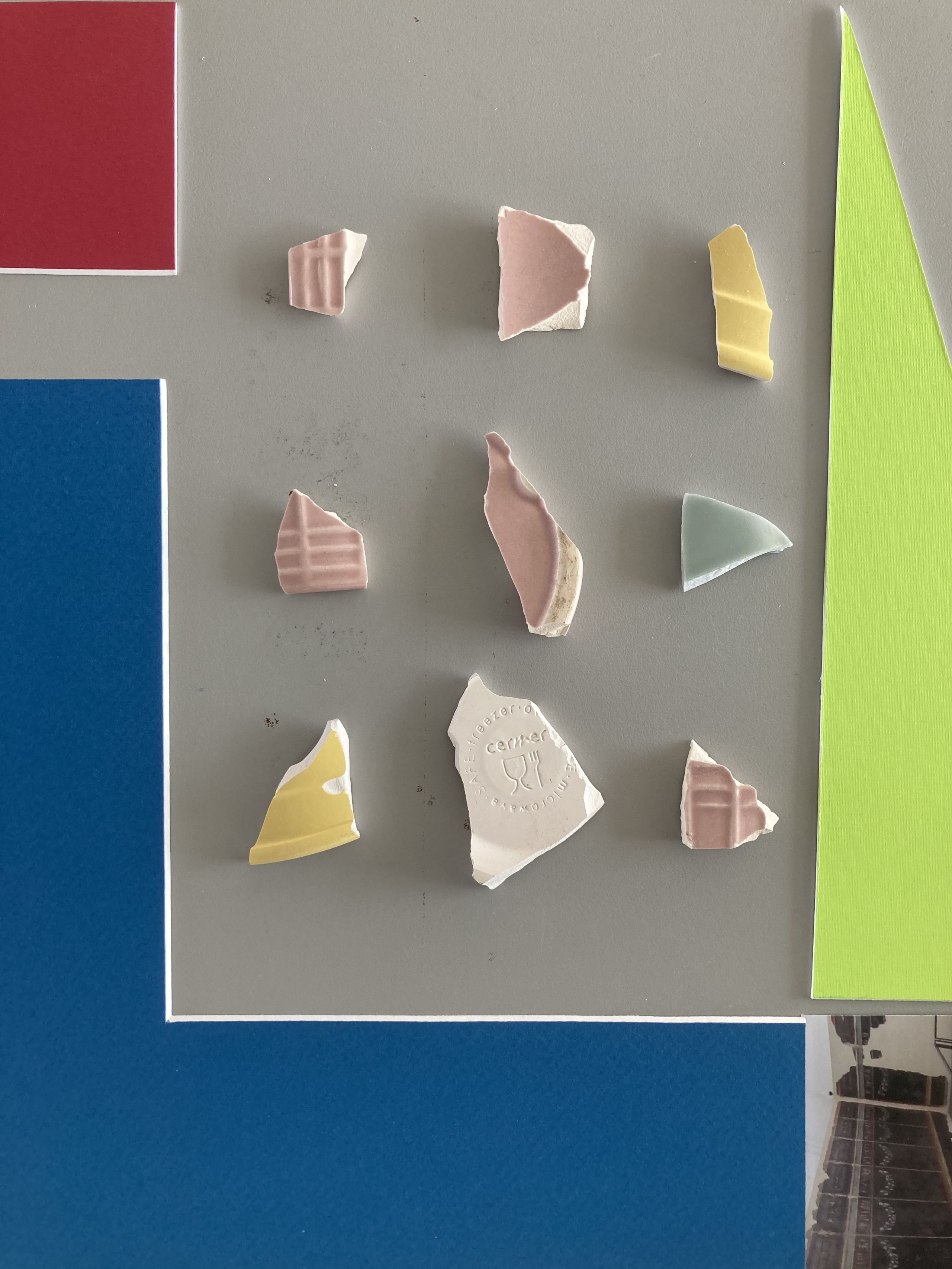
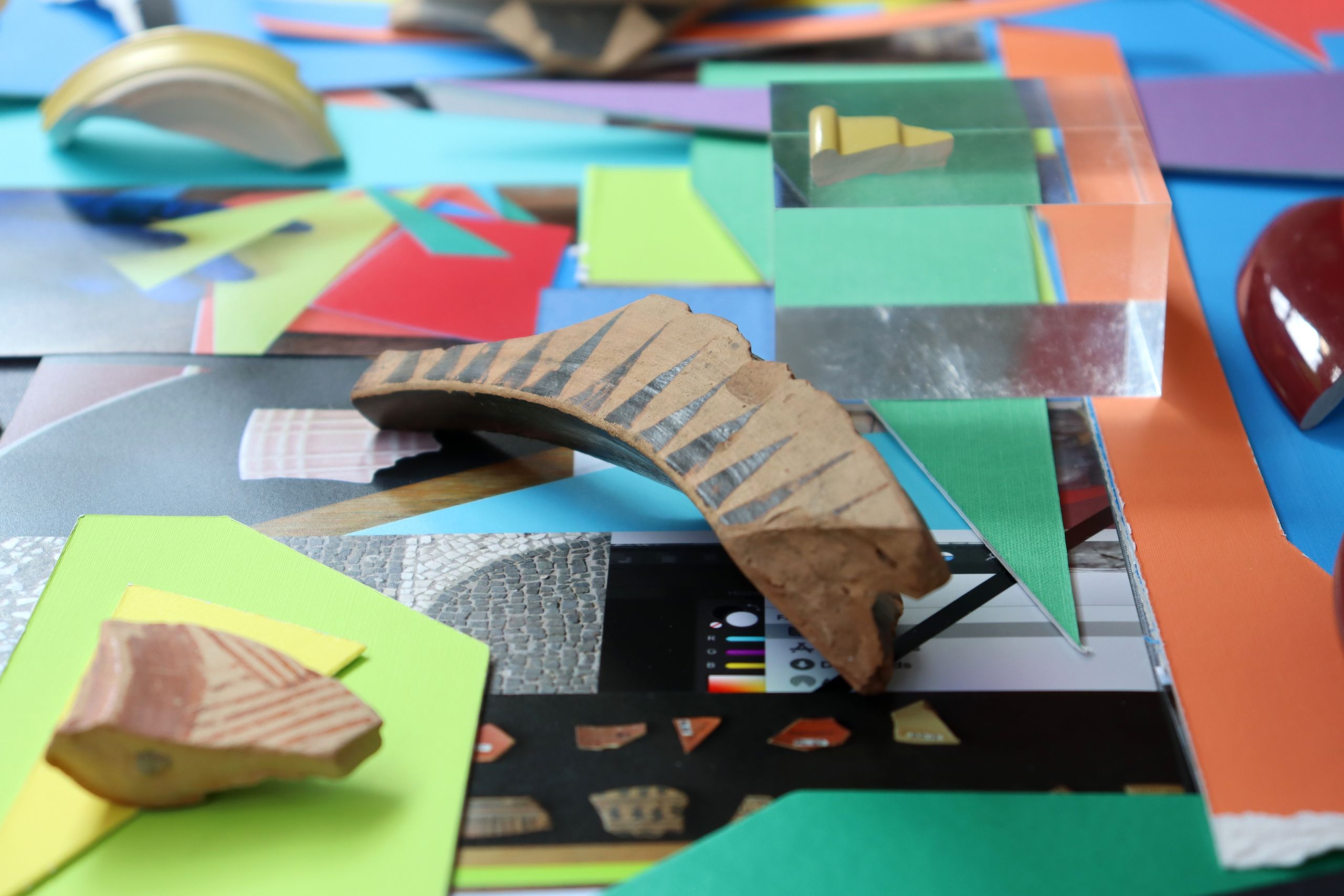
Cambridge Sherd Research Trip
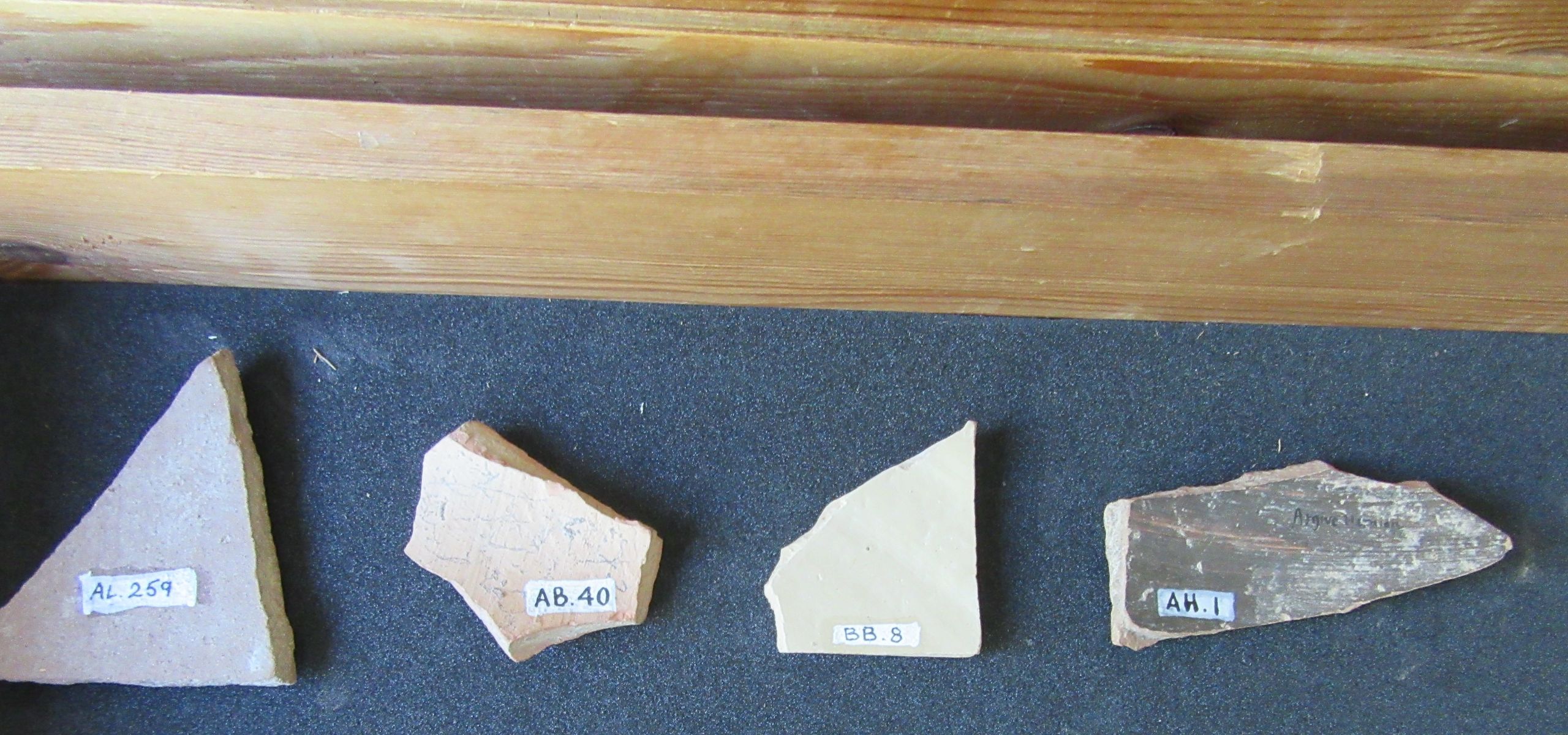
I compiled a shortlist of sherds to view at the museum. When I arrived, the delicate sherds were laid with their decorative sides face down and their reference numbers facing up in a wooden box lined with foam. I had become accustomed to viewing them as flat images online, almost forgetting there was more than one side to them. I turned each over to see the patterns I had been drawn to; if I didn’t have to turn them over to see I might have felt apprehensive about touching them at all.
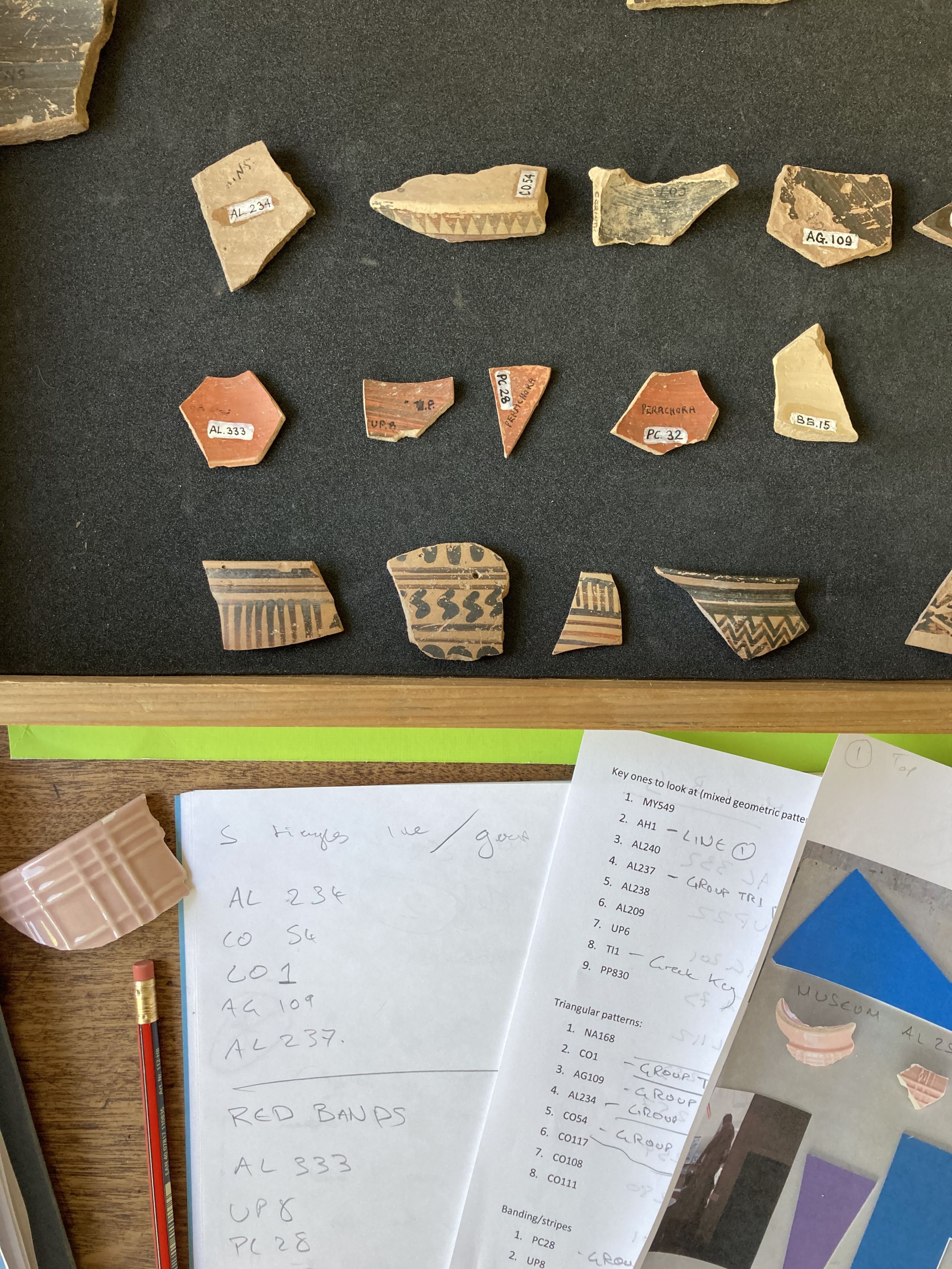
I had come to see how I might use them as part of a display, I gingerly began grouping and arranging the sherds as I had done so with images and mountboard in my studio. Once I had inspected the sherds and decided how I would use them in my own arrangement I found myself turning them upside down again as if in a card game, so not to try and use them in a second position. Slowly I began treating the sherds as another material to use.

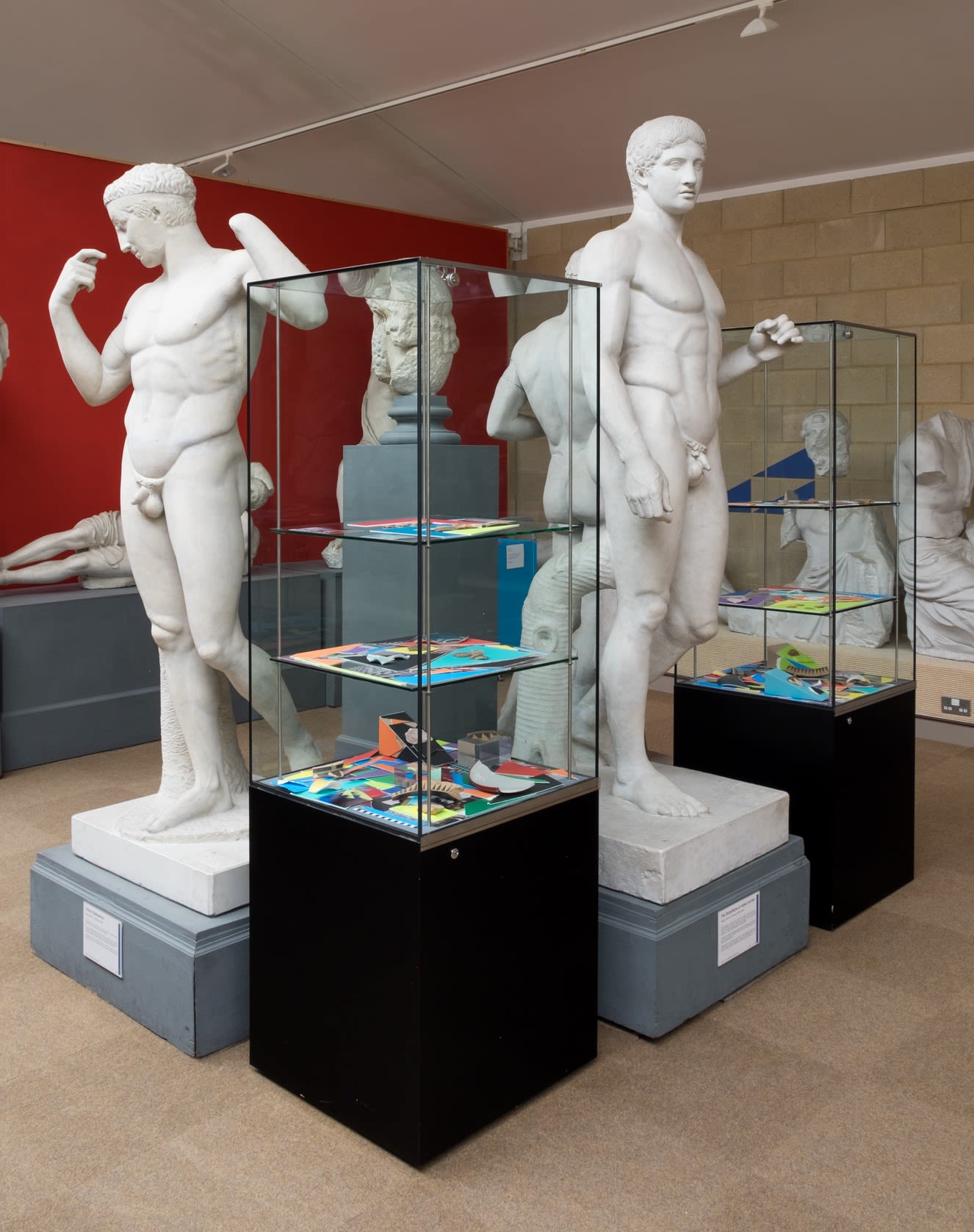
Photography: Glen Jamieson
Photography: Glen Jamieson
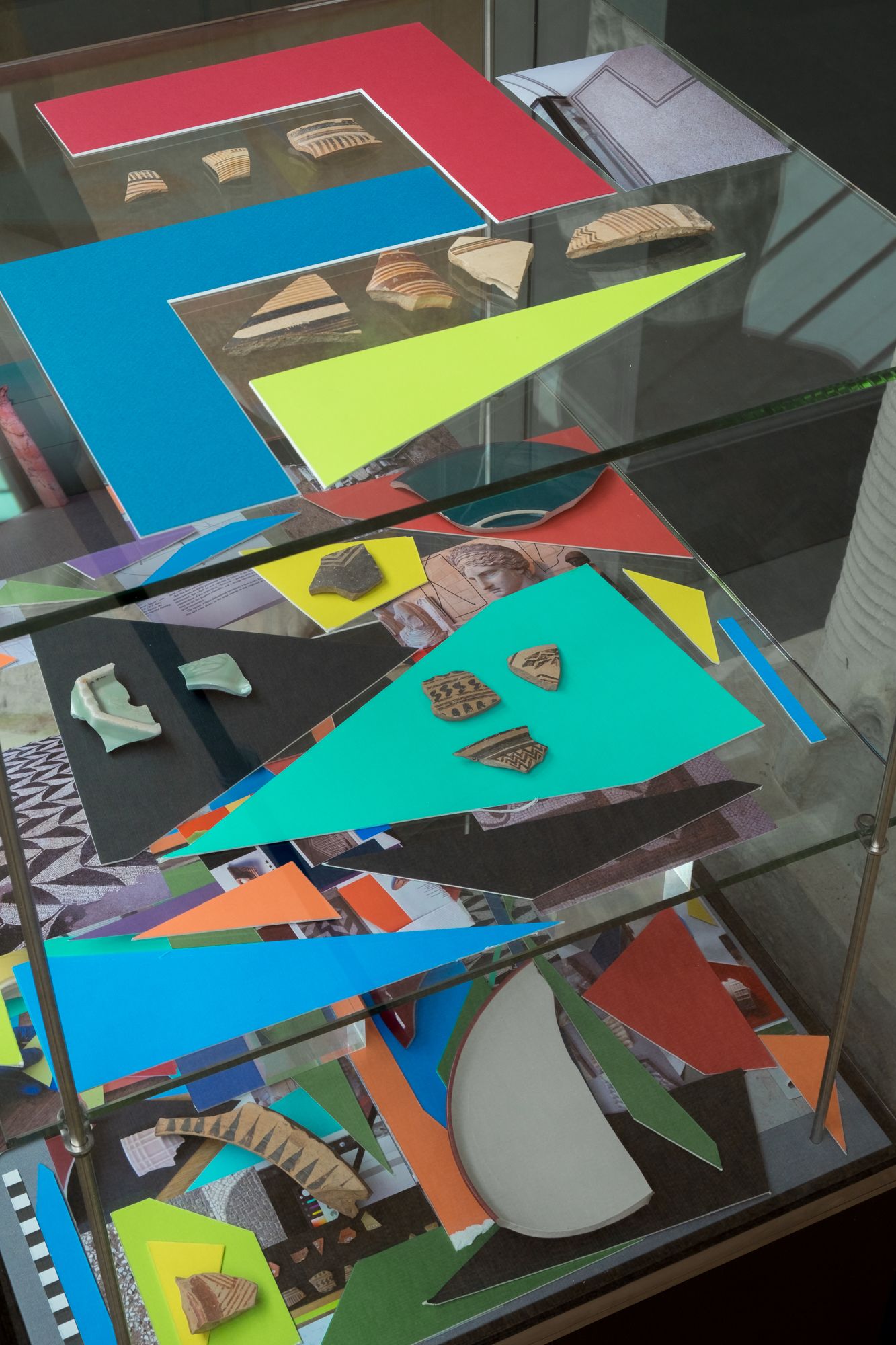
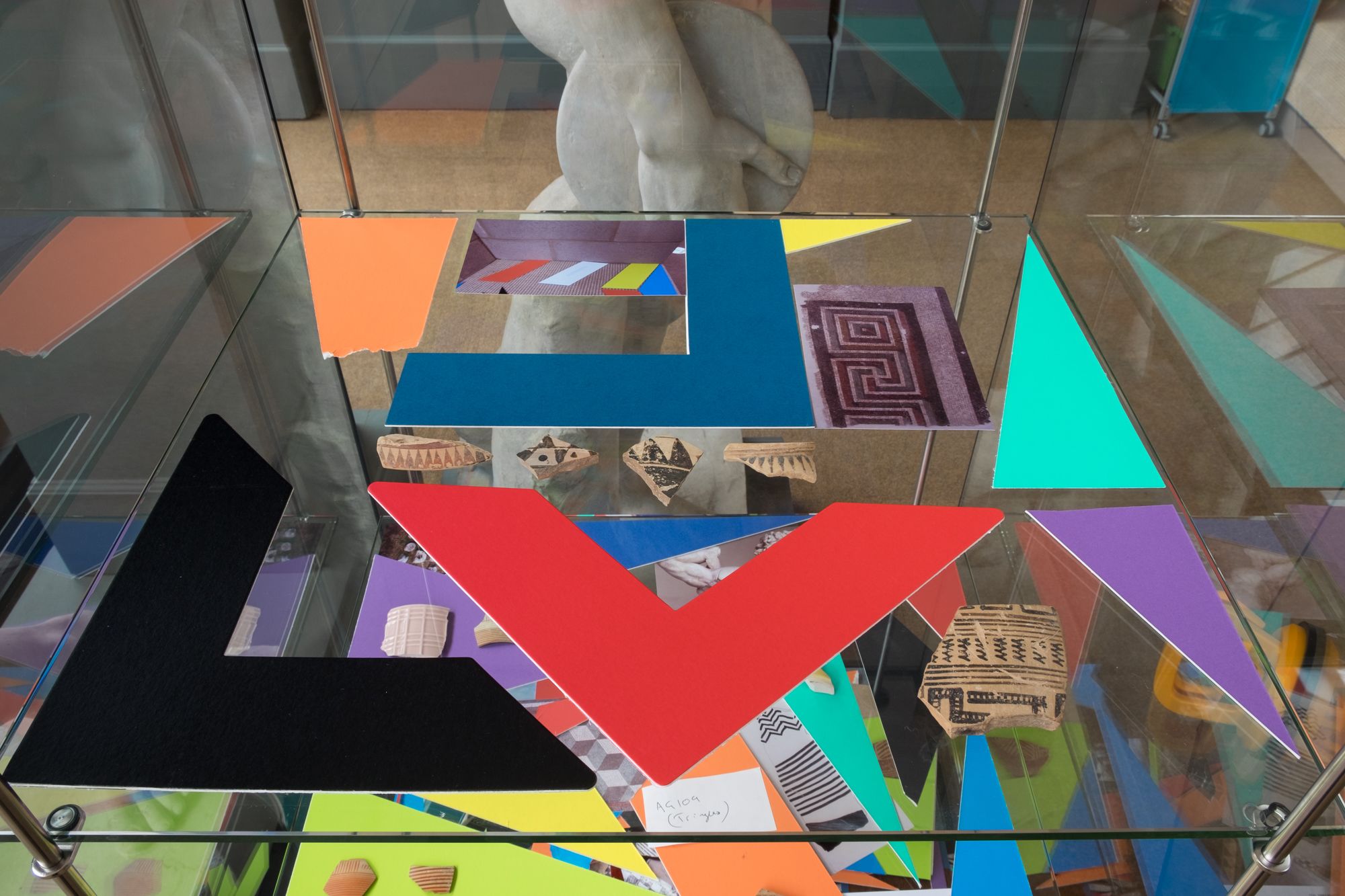
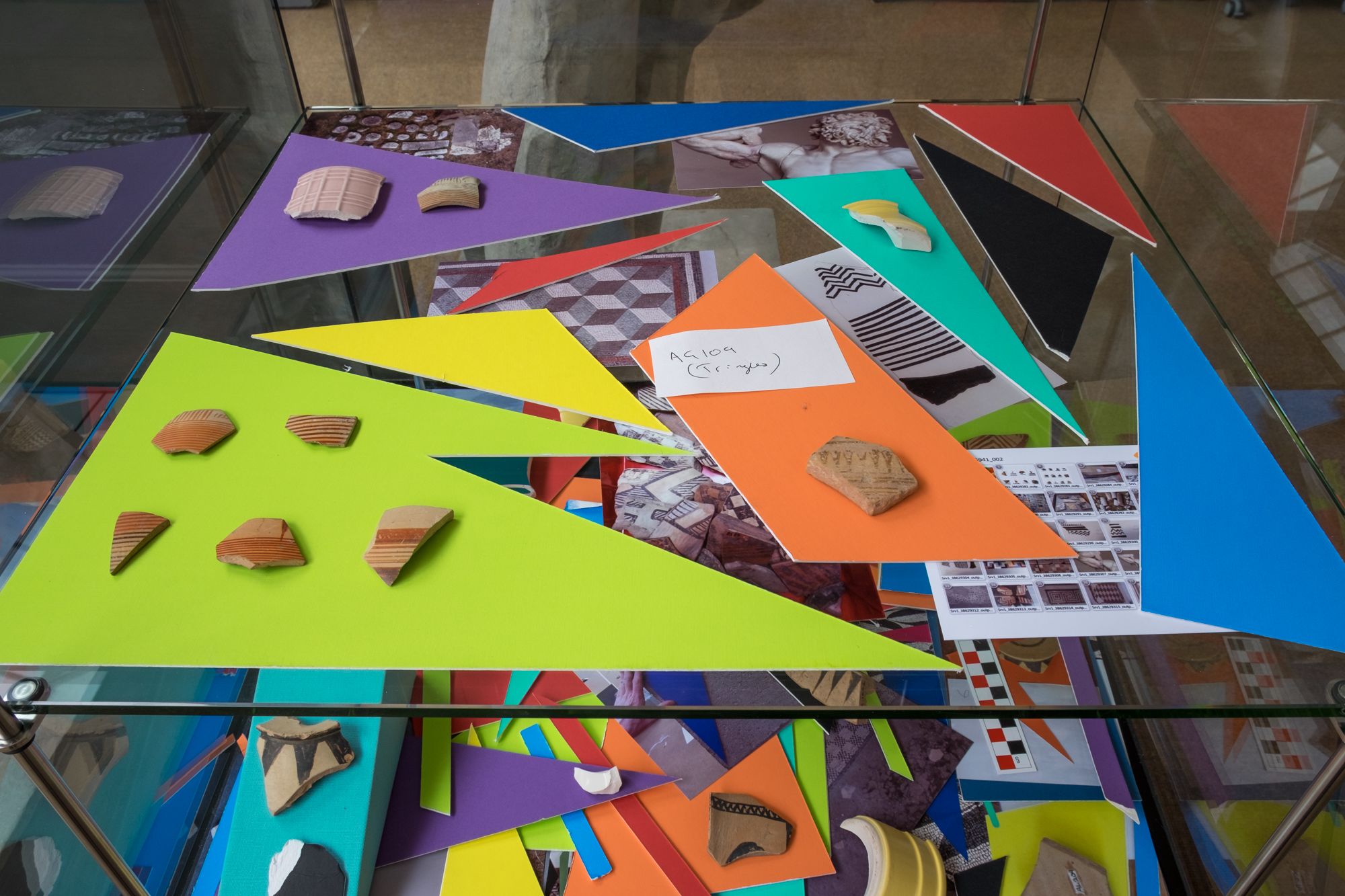
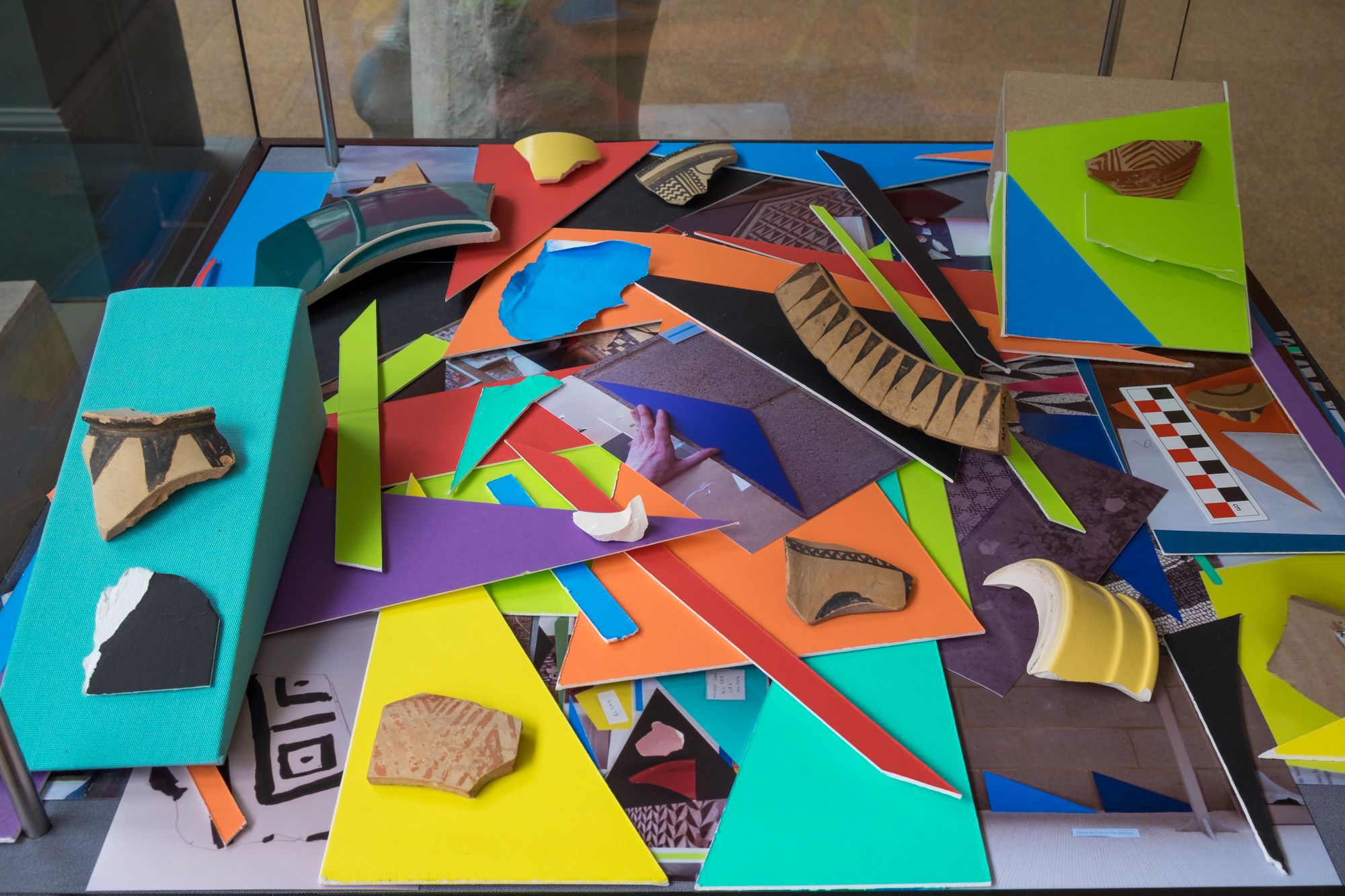
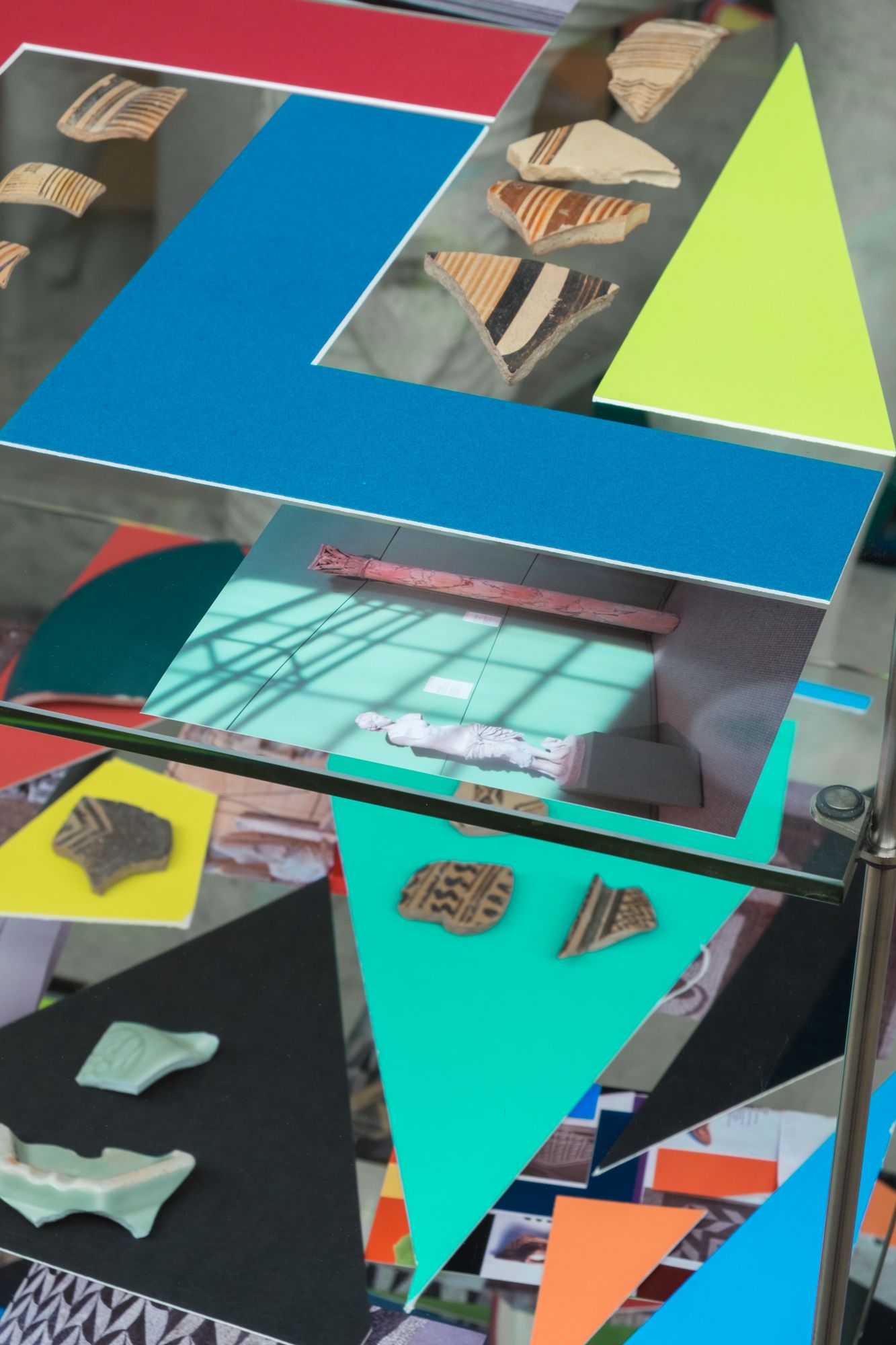


Arrangement of coloured mountboard, photographs and ancient greek sherds
Arrangement of coloured mountboard, photographs and ancient greek sherds



Arrangement of Coloured mountboard, photographs and ancient sherds.
Arrangement of Coloured mountboard, photographs and ancient sherds.
Thank you Catrin Huber, Jonathan P. Watts, Susanne Turner, Sade Ojelade and everyone at the Museum of Classical Archaeology for their kind help and sharing their expertise. Thank you, Adam Pugh, for the exhibition design identity. Thank you, Glen Jamieson, for documentation of the exhibition.
The development of work for this exhibition was supported by Arts Council England, Developing your Creative Practice.

A twist of the hand at the Museum of Classical Archaeology
18 June - 3 September 2021
Images © Museum of Classical Archaeology
